Status of Lighting Technology Application in Indonesia
Abstract
1. Introduction
2. Literature Review
3. General Condition Related to Lamps in Indonesia
3.1. Market of Lamp in Indonesia
- ▪
- Association of Indonesia Lighting Company (Aperlindo: Asosiasi Perusahaan Perlampuan Indonesia), which has the largest membership base with 44 members and more than 90% of its members are importers of lighting products;
- ▪
- Association of Indonesia Lighting Manufacture (Gamatrindo: Gabungan Industri Manufaktur Lampu Terpadu Indonesia), which is a group of local lamp makers with eight active members;
- ▪
- Association of Indonesia Luminaire and Electricity Industry (AILKI: Asosiasi Industri Luminer dan Kelistrikan Indonesia) which is a smaller association of larger brands such as Panasonic, Osram, Philips, and GE;
- ▪
- Association of Luminaire of Indonesia (Alindo: Asosiasi Luminer Indonesia).
3.2. Standards Related to Lighting in Indonesia
- ▪
- SNI 6197–2011: energy conservation in lighting systems;
- ▪
- SNI 7391–2008: specifications for in urban areas;
- ▪
- SNI 03–2396–2001: procedures for designing natural lighting systems in buildings;
- ▪
- SNI 03–6575–2001: procedures for designing artificial lighting systems in buildings;
- ▪
- SNI IEC 61347–2011: lamp control equipment;
- ▪
- SNI IEC 60400–2011: light fittings for fluorescent tube lamps and starter fittings;
- ▪
- SNI IEC 60598–2016: luminaire;
- ▪
- SNI IEC 60838–2017: various light fittings;
- ▪
- SNI IEC 60399–2017: barrel thread for lamp fittings with lampshade fitting rings;
- ▪
- SNI IEC 60360–2016: standard method of measuring the temperature rise of the lamp cap;
- ▪
- SNI IEC 60061–2016: Control of interchangeability and safety of lamp caps and lamp holders together with measuring instruments.
3.3. Electrification of Indonesia
- ▪
- Use of Marine Cable
- ▪
- Small Capacity Power Plant
- ▪
- TaLis and MESS
3.4. Use of Lights in Indonesia
- ▪
- PLN electricity, which is a source of electric lighting managed by PLN;
- ▪
- Non-PLN electricity, which is a source of electric lighting managed by agencies/parties other than PLN, including those using lighting sources from batteries, generators, and solar power plants (which are not managed by PLN);
- ▪
- Petromak/Aladdin, which is a source of lighting from kerosene such as Petromak/press lamp and Aladdin (including gas lamp);
- ▪
- Lamps/flashlights/torches or other kerosene lamps (Teplok lamps, flashlights, lamps, etc.);
- ▪
- Others, such as carbide lamps, candles, castor bean and candlenut.
- ▪
- A city is an area that has non-agricultural main activities with the composition of the function of the area as a place for government services, social services and economic activities;
- ▪
- A village/rural areas are areas that have the main activities of agriculture, including natural resource management, with the structure of the function of the area as a place for rural settlements, government services, and social services.
3.4.1. Lighting Use in Cities (Big Cities and Small Cities)
- Provinces with electricity consumption per capita greater than the national electricity consumption per capita;
- Provinces with electricity consumption per capita less than the national electricity consumption per capita.
- ▪
- Cities/Regencies with electricity consumption per capita greater than the national electricity consumption per capita;
- ▪
- Cities/Regencies with electricity consumption per capita less than national electricity consumption per capita.
Usage of Lights in Big City Area
Usage of Lights in Small City Area
Big Cities and Small Cities Comparison
3.4.2. Lighting Use in Village, Remote, and Islands
Usage of Light in Village Area
Usage of Light in Island Area
Usage of Light in Remote Area
4. Overview of Lighting General Condition in Indonesia
4.1. Overview of Categorized Region
4.2. Comparison with Other Asean Countries
5. Conclusions
- The results of processing from secondary data and observations in this study indicate that electrification and lighting conditions in each region in Indonesia have differences caused by several factors, especially the level of economic progress and conditions of the region, so that based on these factors 5 regional categories can be made including big cities, small cities, villages, islands, and remote areas.
- Data obtained from CLASP, the government, and associations of lighting companies in Indonesia show that until 2019 the number of lamps that are widely used and the amount of consumption increases from year to year in various regions in Indonesia are energy-saving lamps in the form of LEDs. This information is also confirmed from the results of observations that show the same trend.
- In developed areas such as big cities, the problem of lighting has led to energy efficiency related to the smart city concept, while for other areas such as rural areas, islands, and remote areas, there are still problems related to electrification, so there are programs made by the Indonesian government, such as the LisDes program, the LTSHE program, the construction of PLTD (Diesel Power Plant) and PLTS (Solar Power Plant), etc., to electrify these areas.
- Study results from information on the existence and condition of street lighting shows that in big cities the number of street lighting is in accordance with the standard and has even implemented smart lighting, while in other areas the number of street lighting does not satisfy the standard, even the results of observations show that there are areas where street lighting is not installed at all.
- Study results on the comparison of conditions with other countries in ASEAN show that Indonesia has the largest lamp market compared to other countries in ASEAN due to its large population, even though the level of electricity consumption per capita is relatively low.
Author Contributions
Funding
Institutional Review Board Statement
Informed Consent Statement
Data Availability Statement
Acknowledgments
Conflicts of Interest
References
- Simanjuntak, R.; Dupuis, P.; Canale, L.; Sinisuka, N.I.; Zissis, G. Power Quality of Energy Saving Lamps under Wide Voltage Variations. In Proceedings of the International Lighting Association Society Annual Meeting, Vancouver, BC, Canada, 5–9 October 2014. [Google Scholar]
- Rahman, A.; Hafeez, A.R.; Faizan, A.; Kanwal, I. The Impact of Domestic Energy Efficiency: Retrofit Study of Lights & Fans Using Deemed Saving Method. In Proceedings of the 2019 3rd International Conference on Energy Conservation and Efficiency (ICECE), Lahore, Pakistan, 23–24 October 2019; pp. 1–7. [Google Scholar] [CrossRef]
- Huang, F.; Xu, Y.; Li, Y.; Lei, R.; Hua, Y.; Xu, S. A New High-Efficiency Color Converter Based on the Design of Phosphate Composite for Solid-State Laser Lighting. Available online: https://papers.ssrn.com/sol3/Delivery.cfm?abstractid=4402636 (accessed on 1 March 2023).
- Zhao, C.; Bao, S.; Wen, Q.; Xu, L.; Wang, L.; Wang, X.; Sun, X.; Liang, X.; Zhang, L.; Xiang, W. Performance optimization of Ce: YAG sapphire films for high power density white laser-driven lighting applications. Ceram. Int. 2023. [Google Scholar] [CrossRef]
- Bertin, K.; Canale, L.; Ben Abdellah, O.; Méquignon, M.-A.; Zissis, G. Life Cycle Assessment of Lighting Systems and Light Loss Factor: A Case Study for Indoor Workplaces in France. Electronics 2019, 8, 1278. [Google Scholar] [CrossRef]
- Zissis, G.; Kitsinelis, S. State of art on the science and technology of electrical light sources: From the past to the future. J. Phys. D Appl. Phys. 2009, 42, 173001. [Google Scholar] [CrossRef]
- Indonesia Statistical Bureau (BPS). Statistik Indonesia, Statistical Yearbook of Indonesia 2021; Indonesia Statistical Bureau (BPS): Central Jakarta, Indonesia, 2022; ISSN 0126-2912. [Google Scholar]
- Ministry of Energy and Mineral Resources. 2020 Indonesia Electricity Statistic, 34 ed.; Ministry of Energy and Mineral Resources: Central Jakarta, Indonesia, 2021.
- Yusrizal. Performance of Energy Saving Lamps on Power Quality and Luminous Properties Under Voltage Decreasing from 240 V to 100 V. In Proceedings of the 2015 IEEE Industry Applications Society Annual Meeting, Addison, TX, USA, 18–22 October 2015. [Google Scholar]
- Muhamad, W.N.W.; Zain, M.Y.M.; Wahab, N.; Aziz, N.H.A.; Kadir, R.A. Energy efficient lighting system design for building. In Proceedings of the International Conference on Intelligent System, Modelling and Simulation, 27–29 January 2010; pp. 282–286. [Google Scholar]
- Cathala, J. Georges Claude. Nature 1960, 187, 829–830. [Google Scholar] [CrossRef]
- Jack, A.G.; Et Vrehen, Q.H.F. Progress in fluorescent lamps. Philips Tech. Rev. 1986, 42, 342–351. [Google Scholar]
- Jewkes, J.; Sawers, D.; Stillerman, R.; Jewkes, J.; Sawers, D.; Stillerman, R. Fluorescent Lighting. In The Sources of Invention; Palgrave Macmillan: London, UK, 1969; pp. 252–254. [Google Scholar]
- Abbaspour, M.; Jahanikia, A.H. Power Quality Consideration in the Widespread Use of Compact Fluorescent Lamps. In Proceedings of the Electrical Power Quality and Utilisation (EPQU), Lodz, Poland, 15–17 September 2009; Volume 10, pp. 1–6. [Google Scholar]
- Canale, L. la LED, chemins croisés entre éclairage et radio télécommunications. La Rev. De L’électricité Et De L’électronique 2020, 1, 40–46. [Google Scholar]
- CLASP Report. Indonesia Lighting Market Study and Policy Analysis. 2020. Available online: https://www.clasp.ngo/research/all/indonesia-market-study-and-policy-analysis-for-lighting/ (accessed on 25 August 2022).
- Taguchi, T. Present Status of White LED Lighting Technologies in Japan. J. Light Vis. Environ. 2003, 27, 131–139. [Google Scholar] [CrossRef]
- Taguchi, T. Developing White LED Lighting Systems and Its Technological Roadmap in Japan. J. Light Vis. Environ. 2006, 30, 177–182. [Google Scholar] [CrossRef]
- Kasuga, T.; Agoh, T.; Enomoto, A.; Fukuda, S.; Furukawa, K.; Furuya, T.; Haga, K.; Harada, K.; Hiramatsu, S.; Honda, T.; et al. Status of R&D efforts toward the ERL-based future light source in Japan. In Proceedings of the 2007 IEEE Particle Accelerator Conference (PAC), Albuquerque, NM, USA, 25-29 June 2007; pp. 1016–1018. [Google Scholar] [CrossRef]
- De Almeida, A.; Santos, B.; Paolo, B.; Quicheron, M. Solid state lighting review–Potential and challenges in Europe. Renew. Sustain. Energy Rev. 2014, 34, 30–48. [Google Scholar] [CrossRef]
- Al Dakheel, J.; Tabet Aoul, K.; Hassan, A. Enhancing green building rating of a school under the hot climate of UAE; renewable energy application and system integration. Energies 2018, 11, 2465. [Google Scholar] [CrossRef]
- Montoya, F.G.; Peña-García, A.; Juaidi, A.; Manzano-Agugliaro, F. Indoor lighting techniques: An overview of evolution and new trends for energy saving. Energy Build. 2017, 140, 50–60. [Google Scholar] [CrossRef]
- Guanglei, W.; Ngarambe, J.; Kim, G. A Comparative Study on Current Outdoor Lighting Policies in China and Korea: A Step toward a Sustainable Nighttime Environment. Sustainability 2019, 11, 3989. [Google Scholar] [CrossRef]
- Collins, K.M.; Onwuegbuzie, A.J.; Jiao, Q.G. Prevalence of Mixed-methods Sampling Designs in Social Science Research. Evaluation Res. Educ. 2006, 19, 83–101. [Google Scholar] [CrossRef]
- The government of DKI Jakarta Province. Panduan Pengguna Bangunan Gedung Hijau Jakarta Berdasarkan Peraturan Gubernur No. 38/2012 Vol 3. Sistem Pencahayaan. 2012. Available online: https://peraturan.bpk.go.id/Home/Details/232359/pergub-prov-dki-jakarta-no-60-tahun-2022 (accessed on 17 November 2022).
- IIEC. Asean Regional Efficient Lighting Market Assessment. 2014. Available online: https://www.lites.asia/downloads/regional-market-assessment (accessed on 5 September 2022).
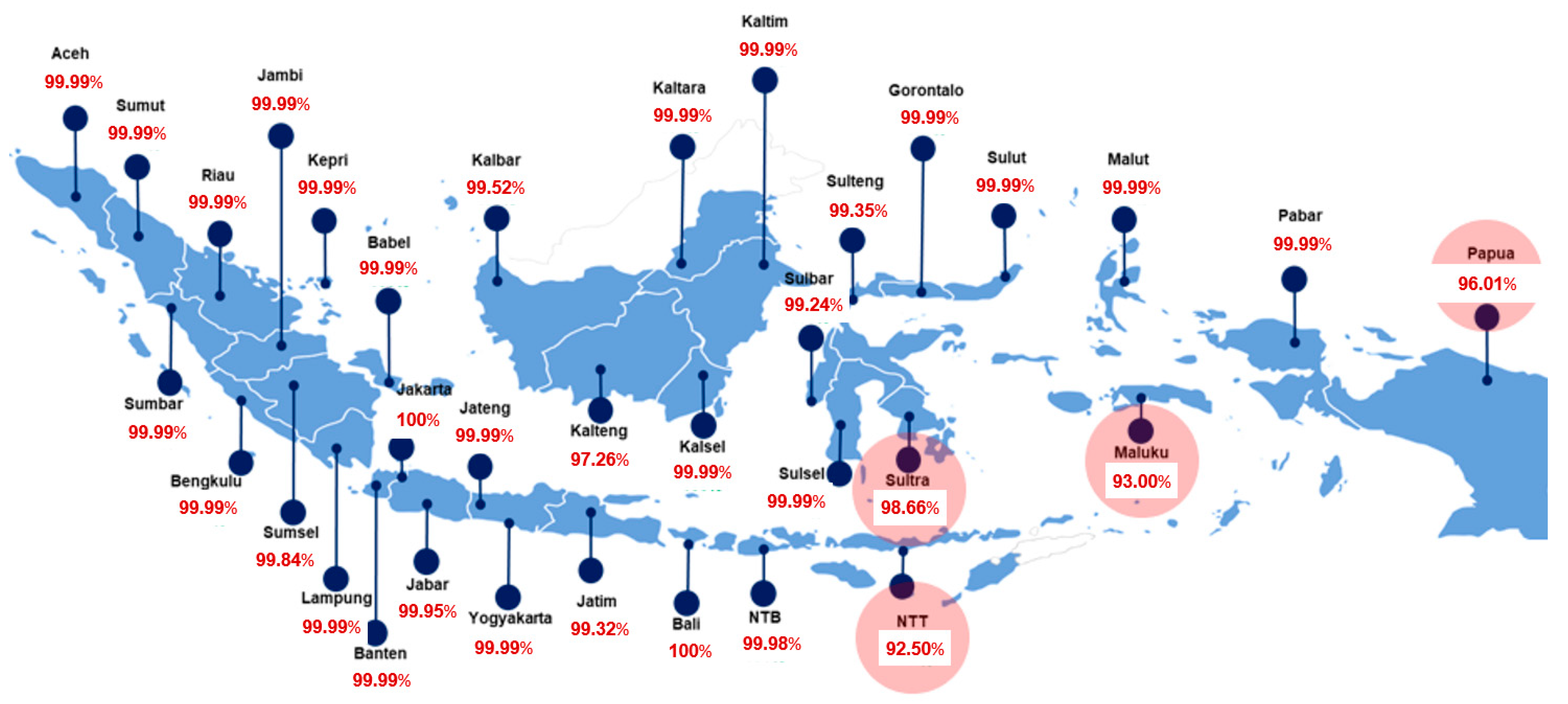
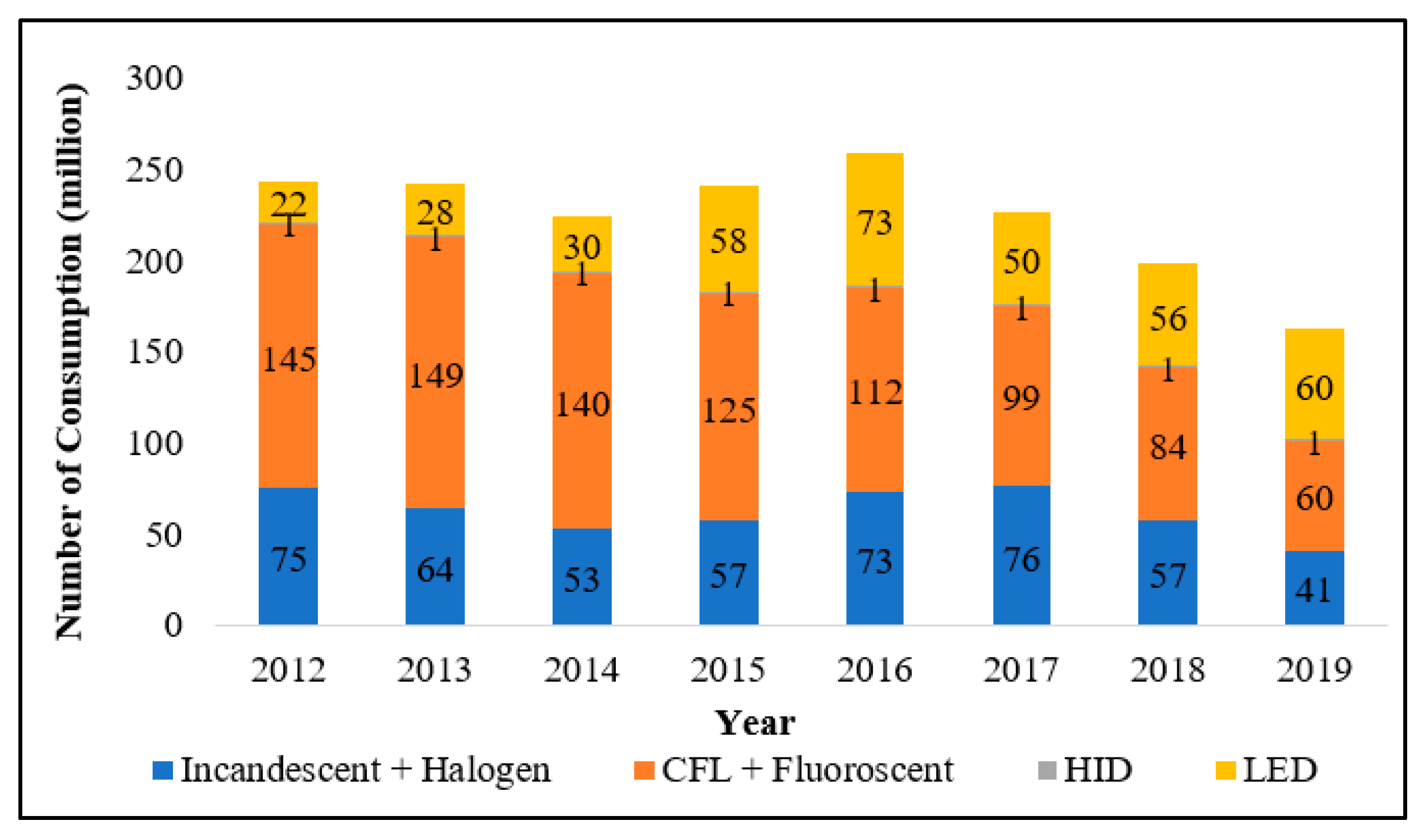
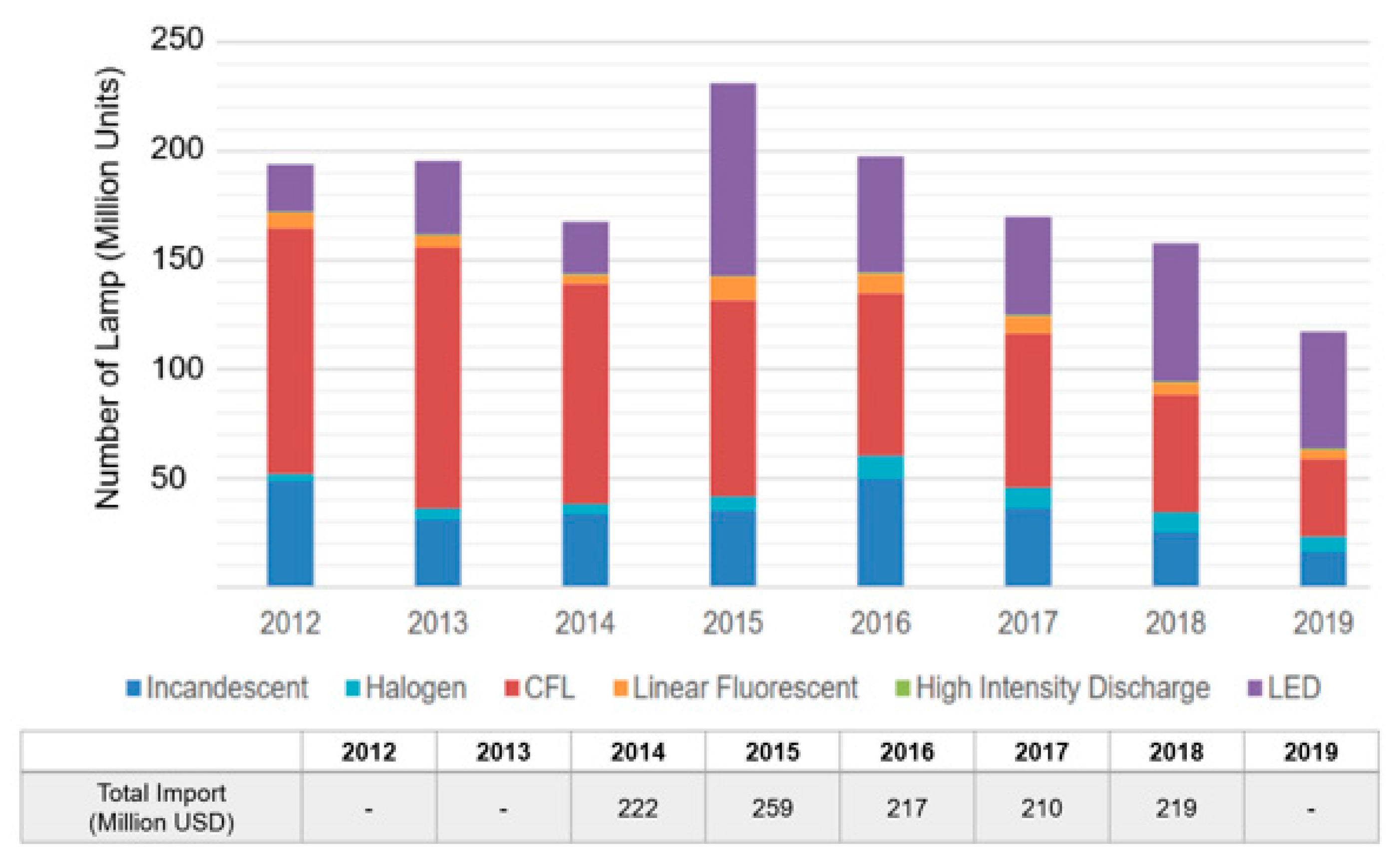
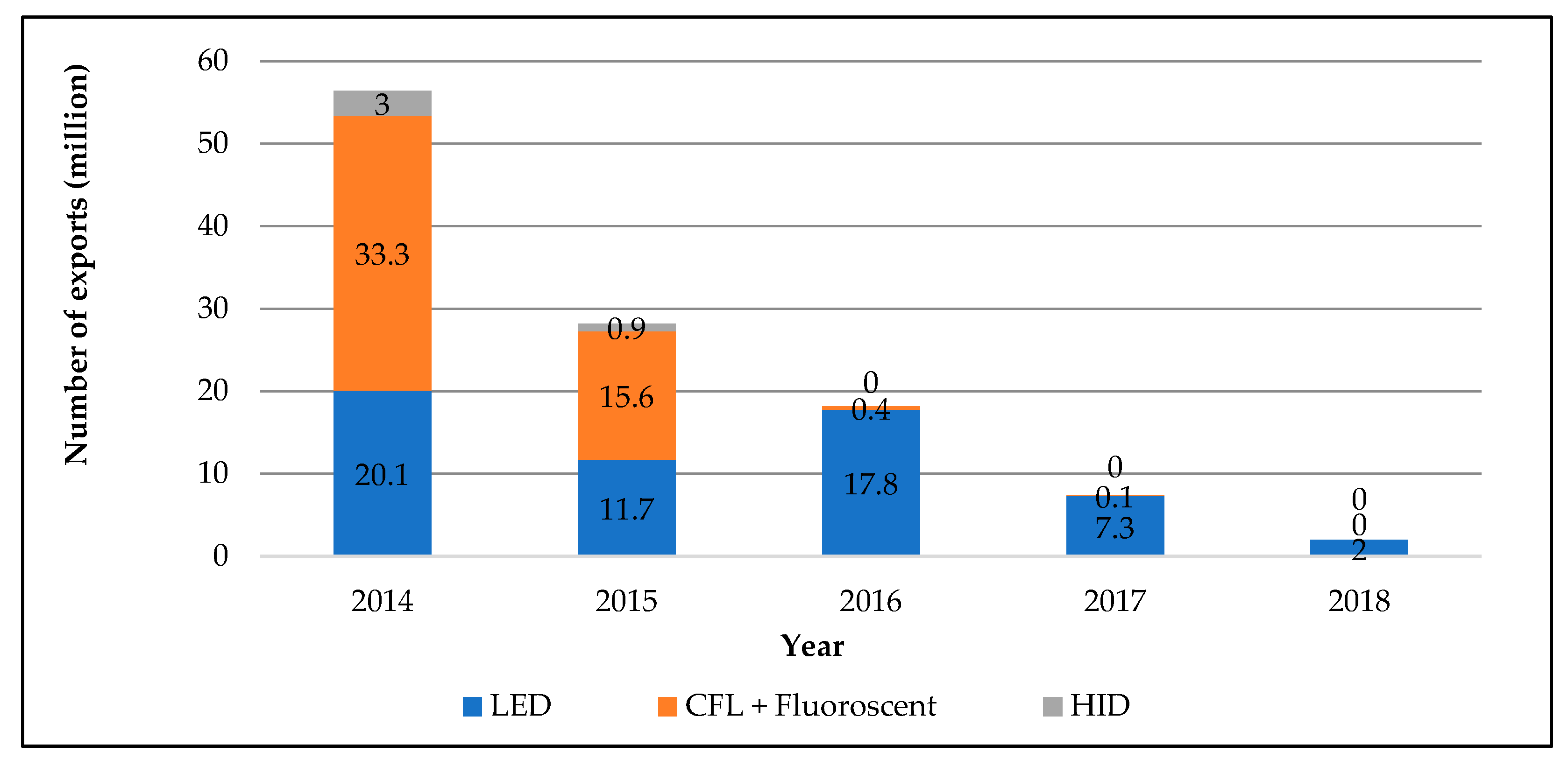
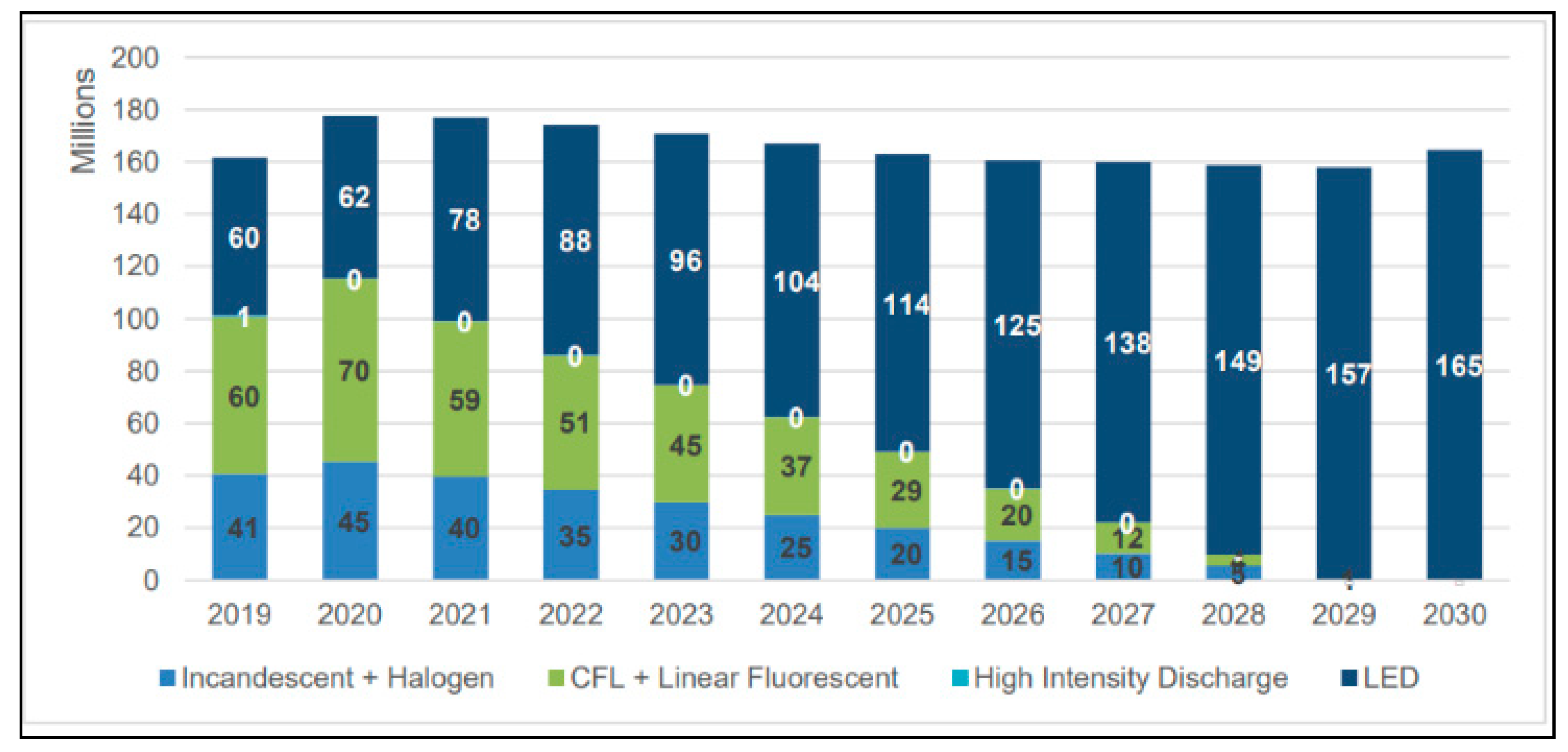
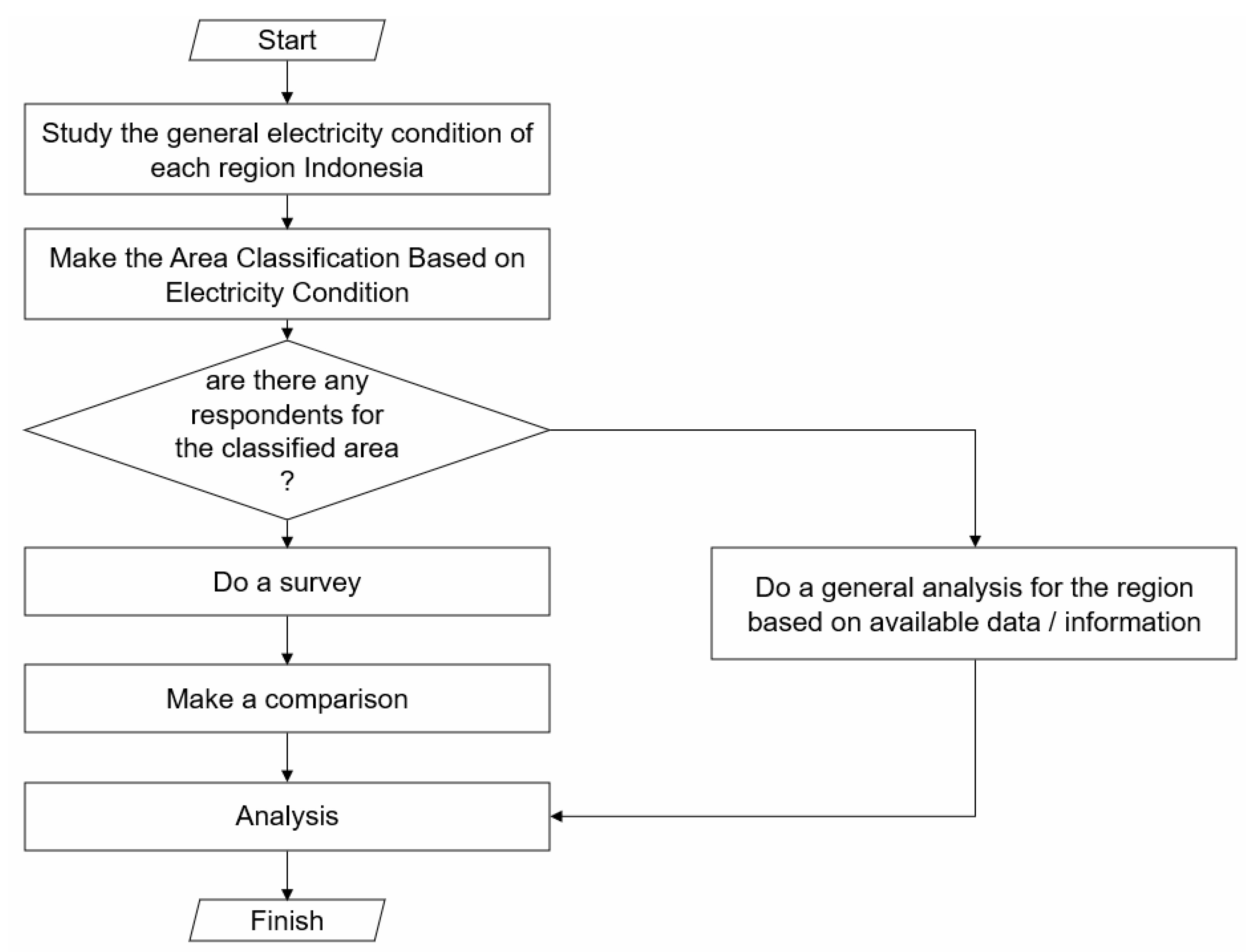


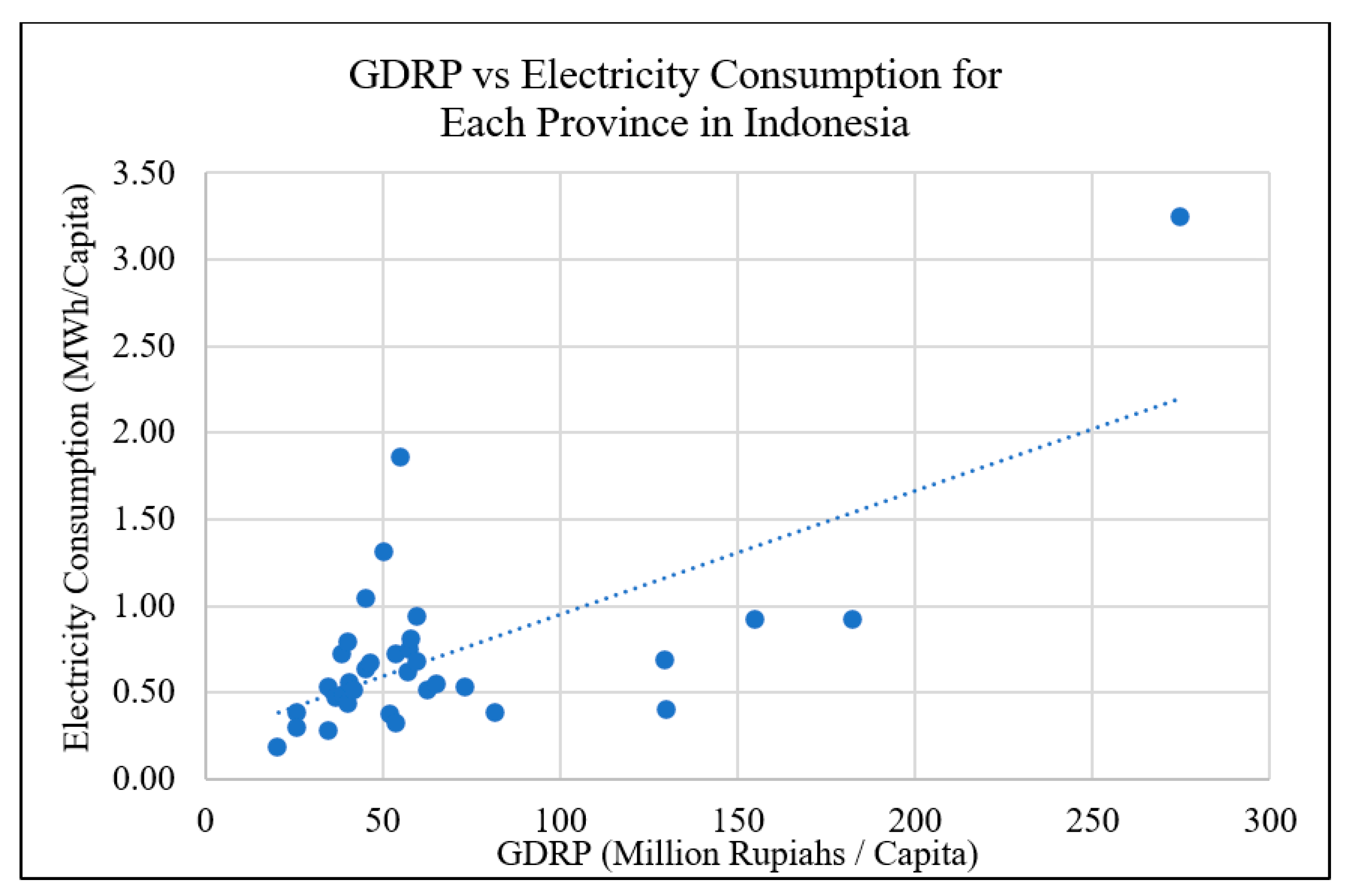
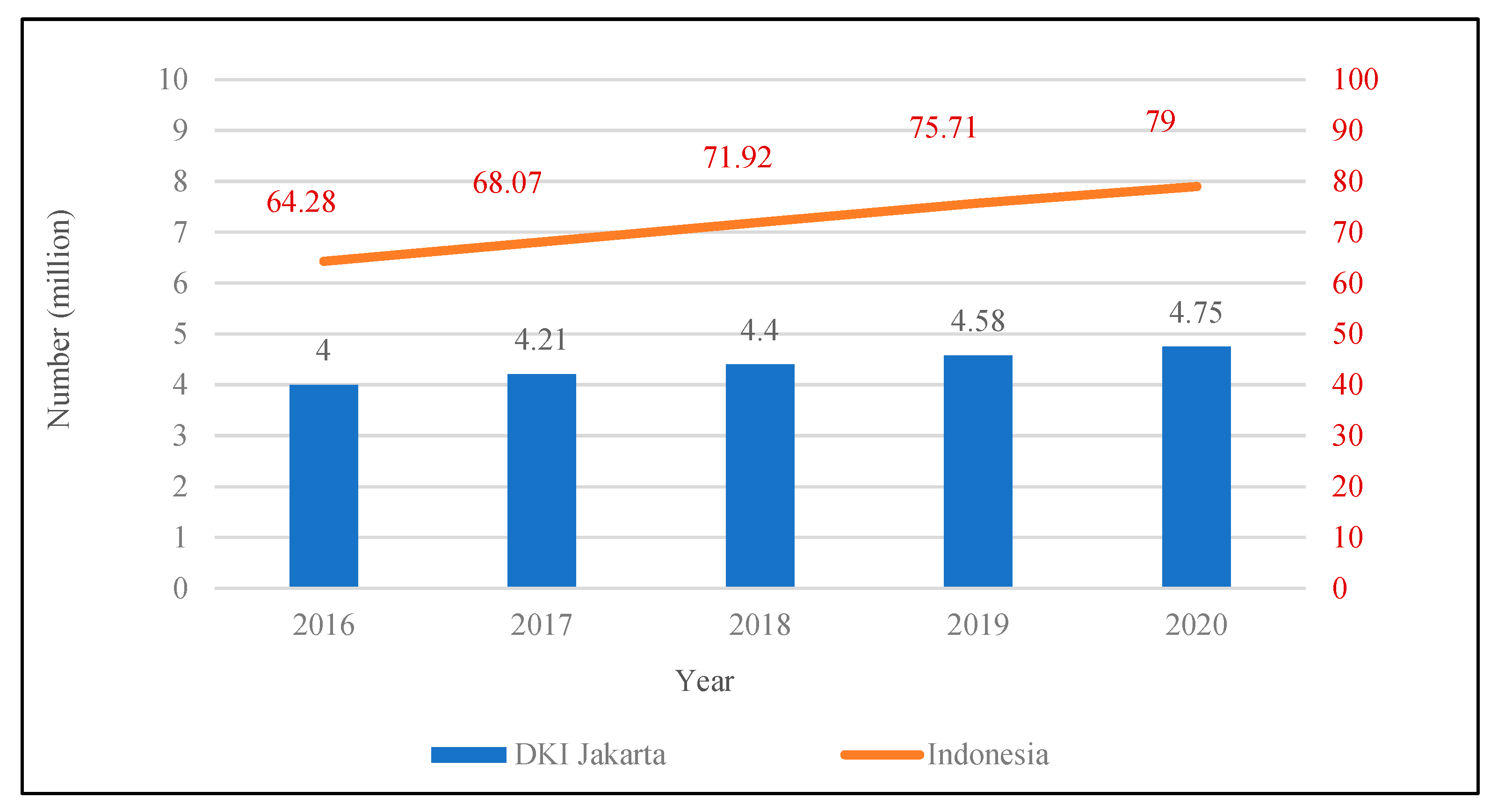
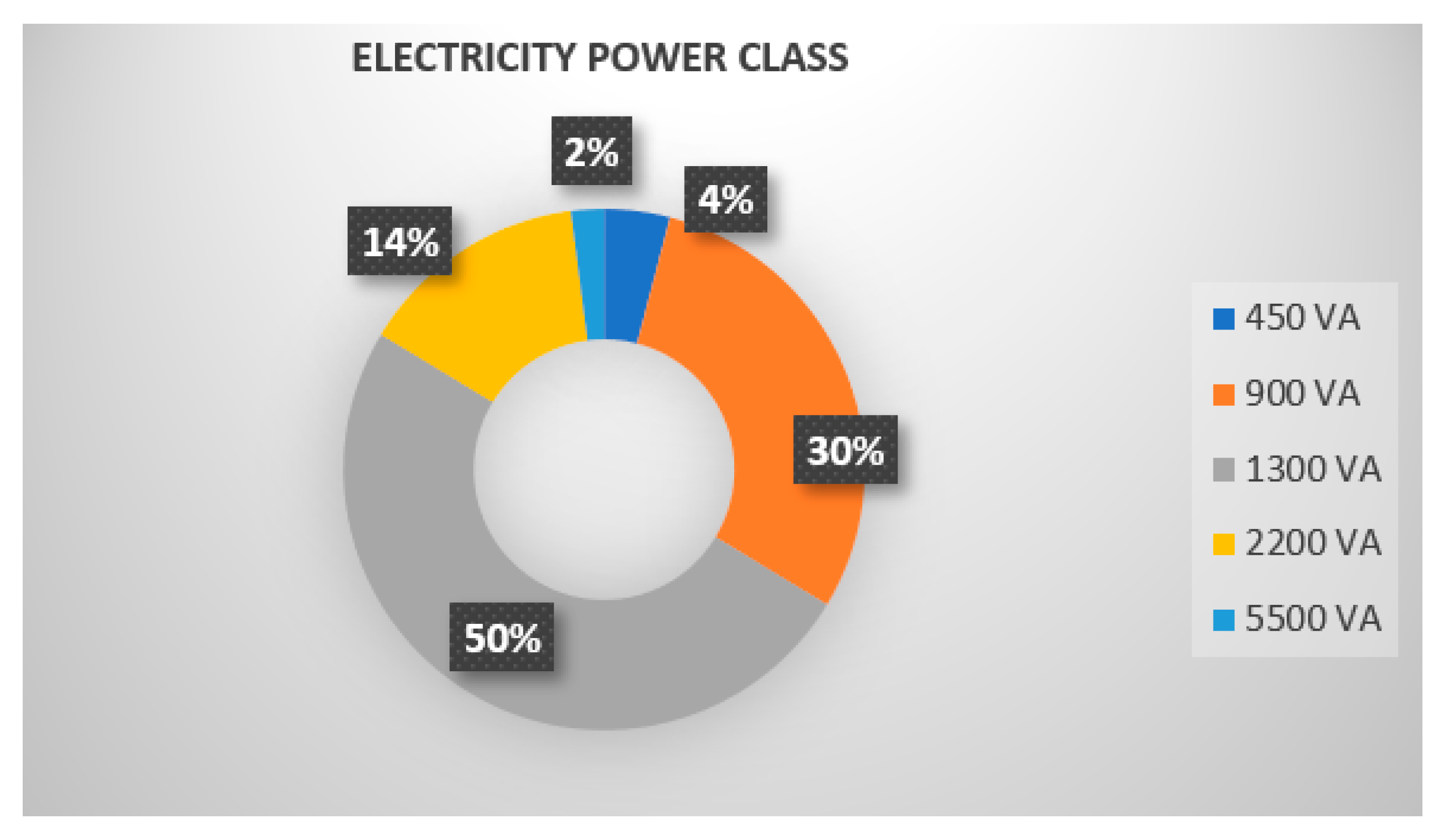
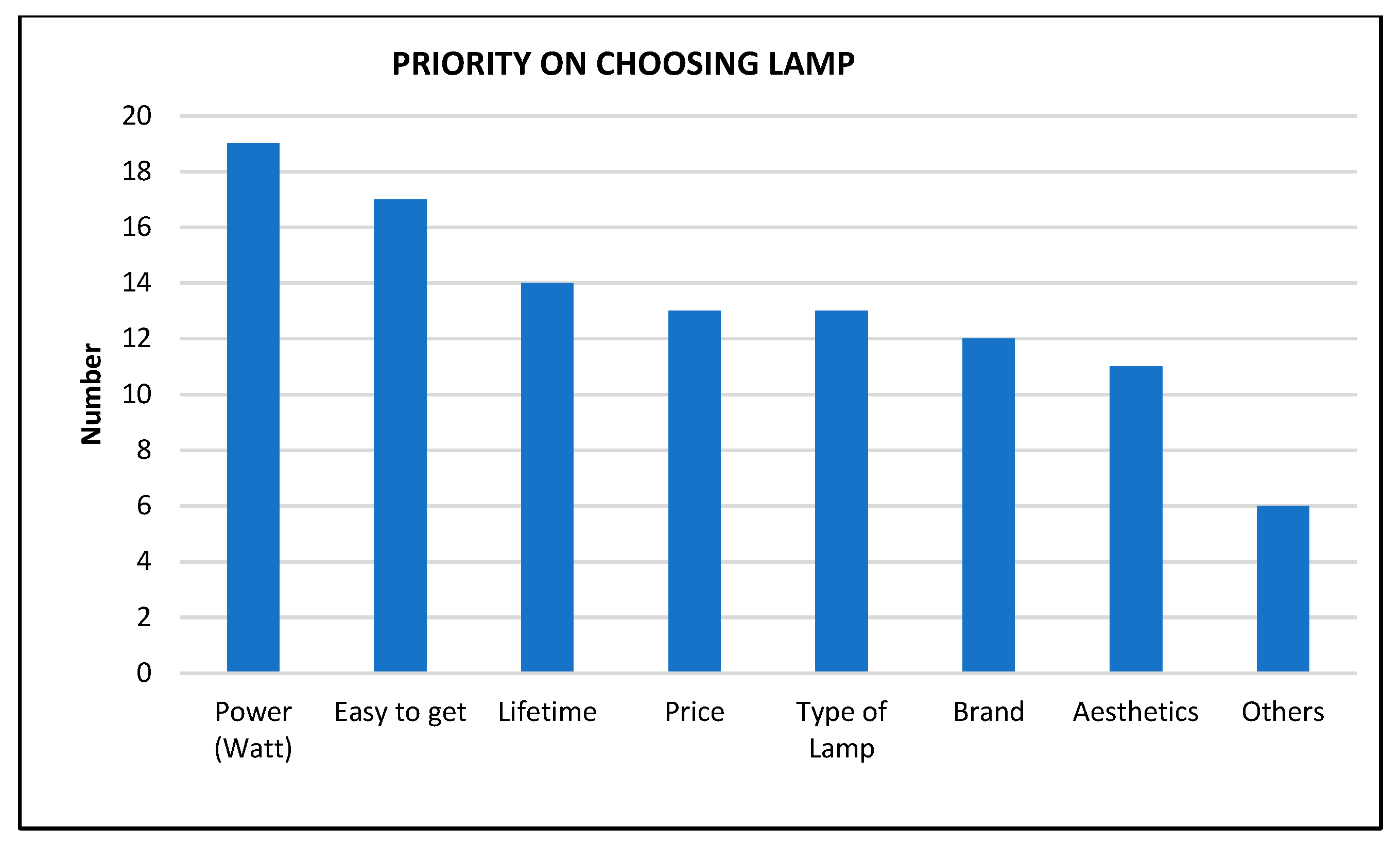
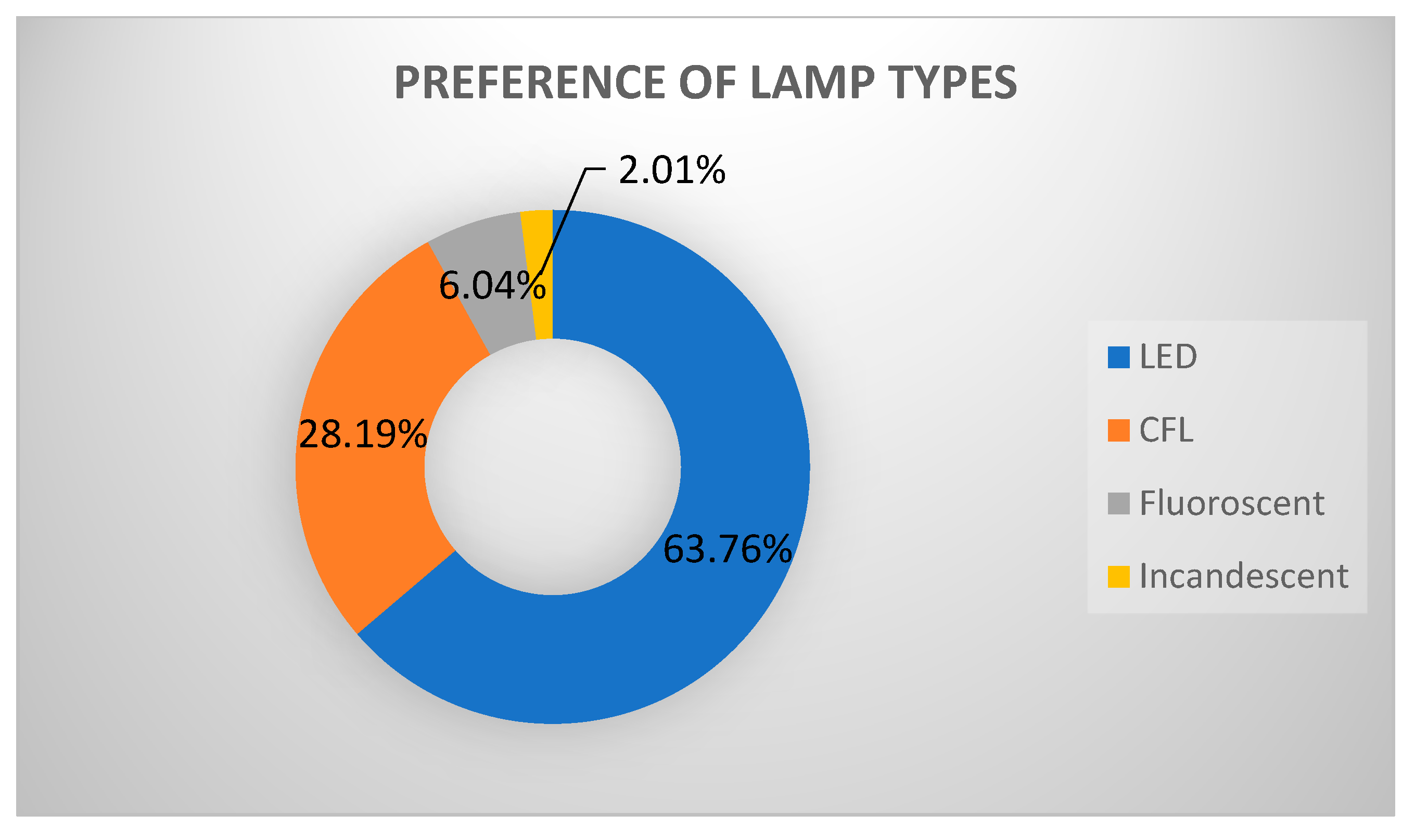
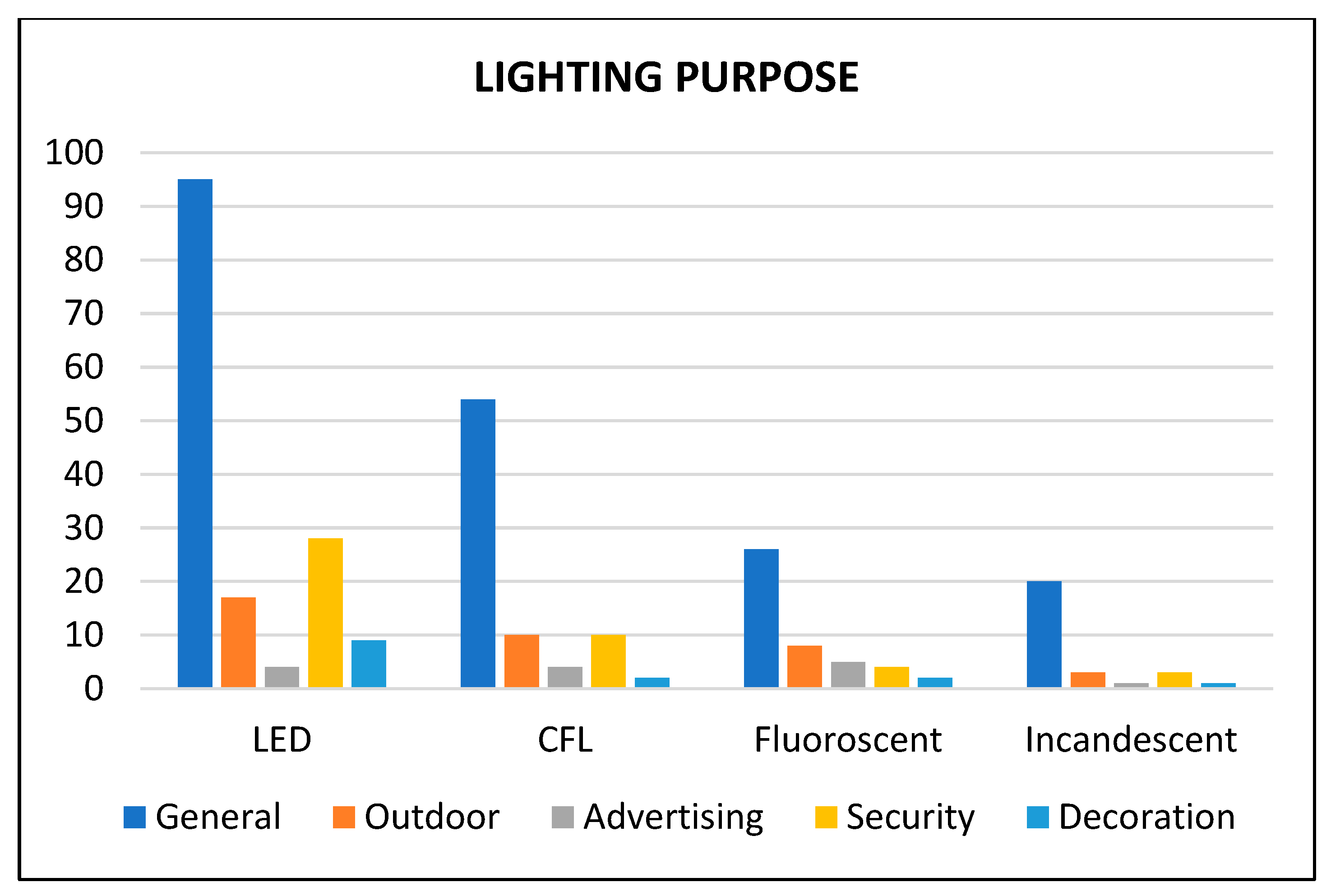
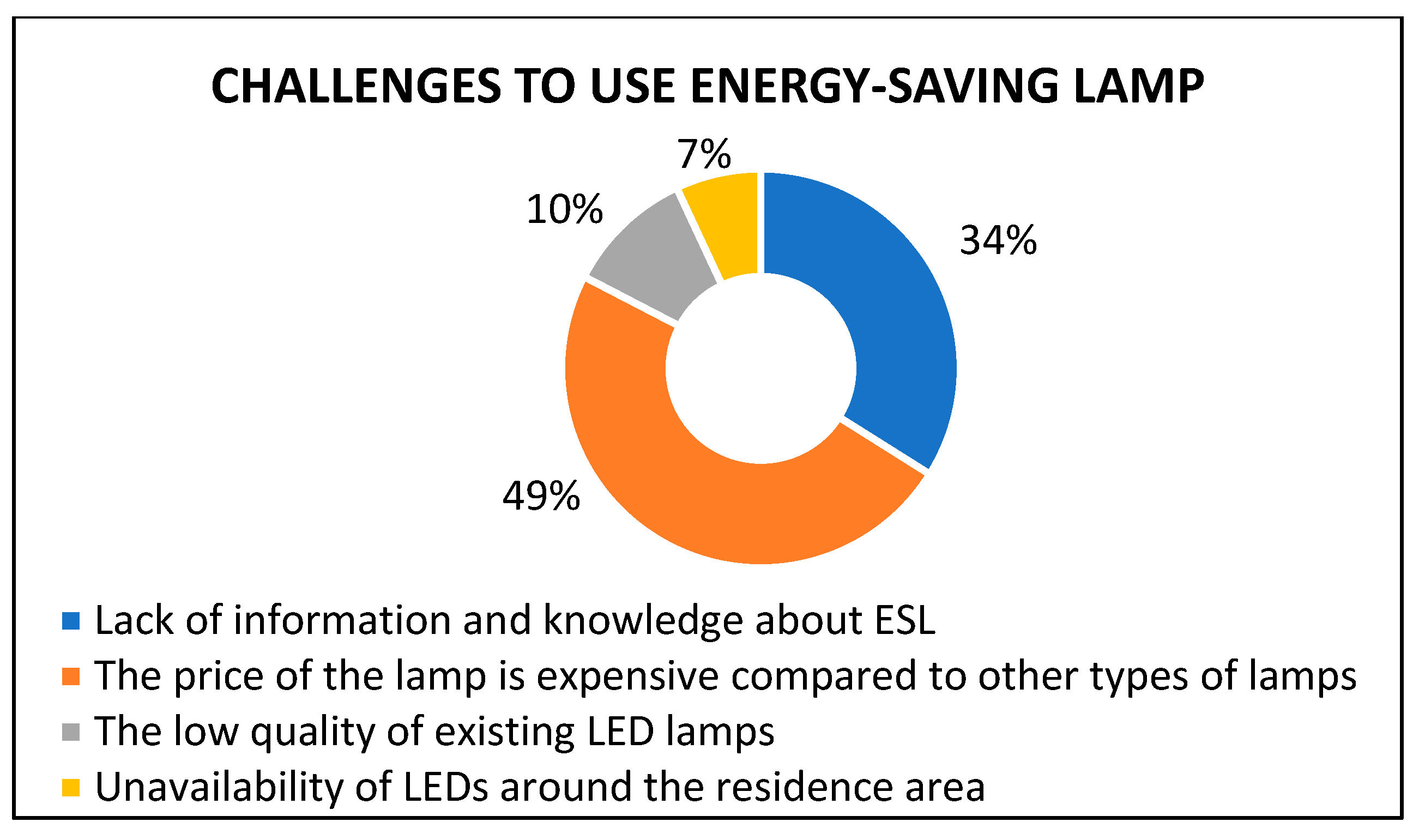
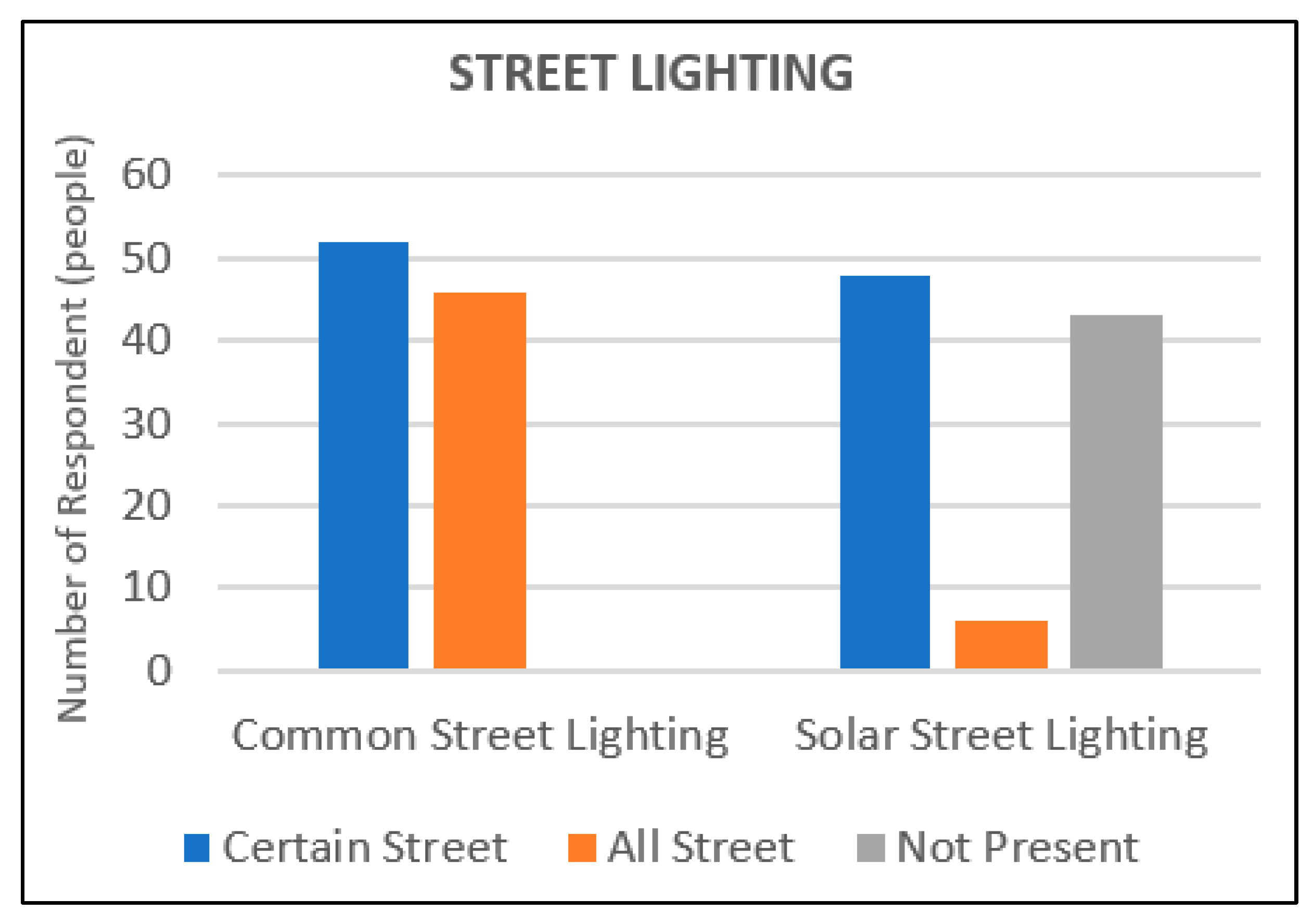
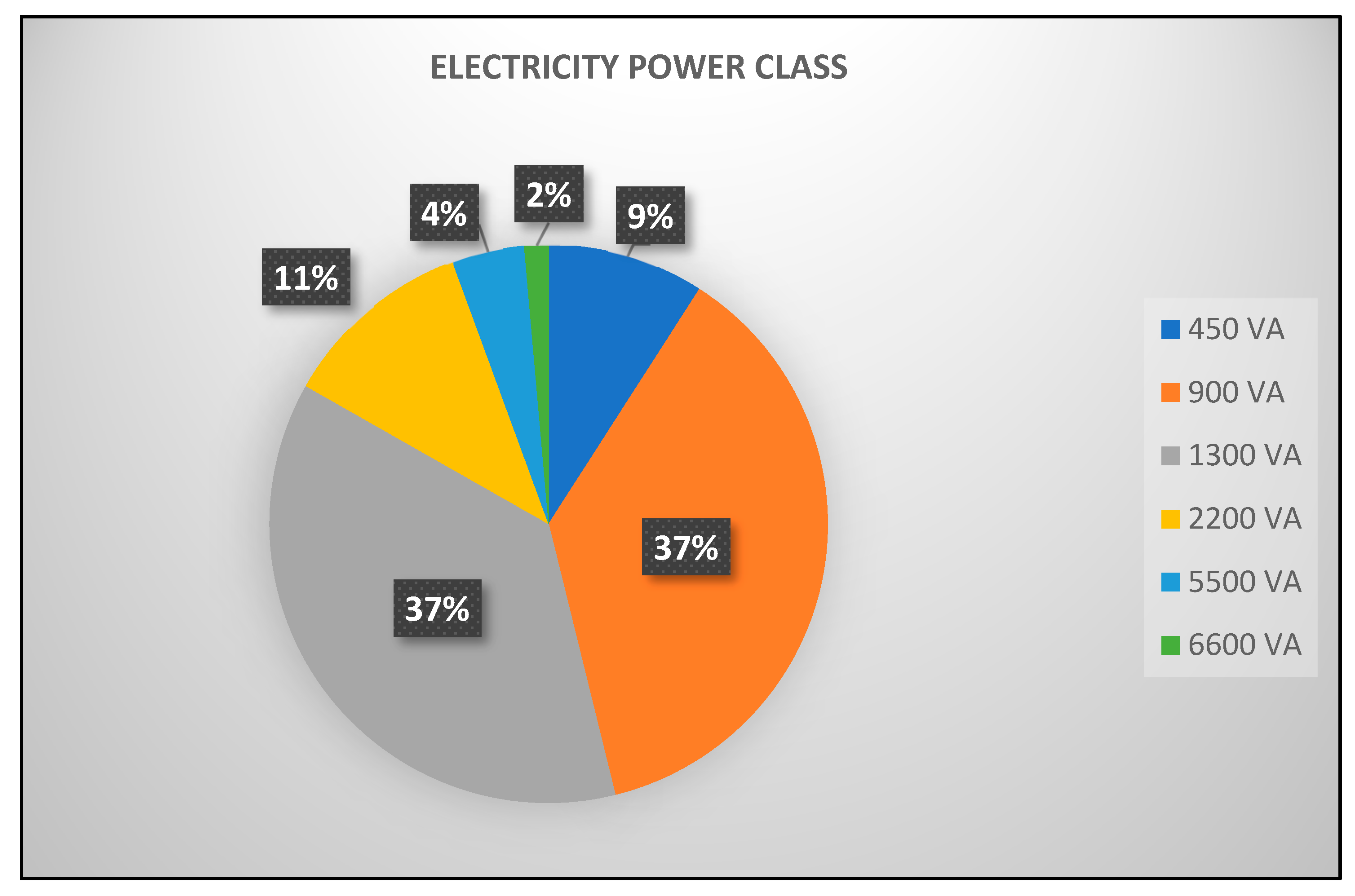
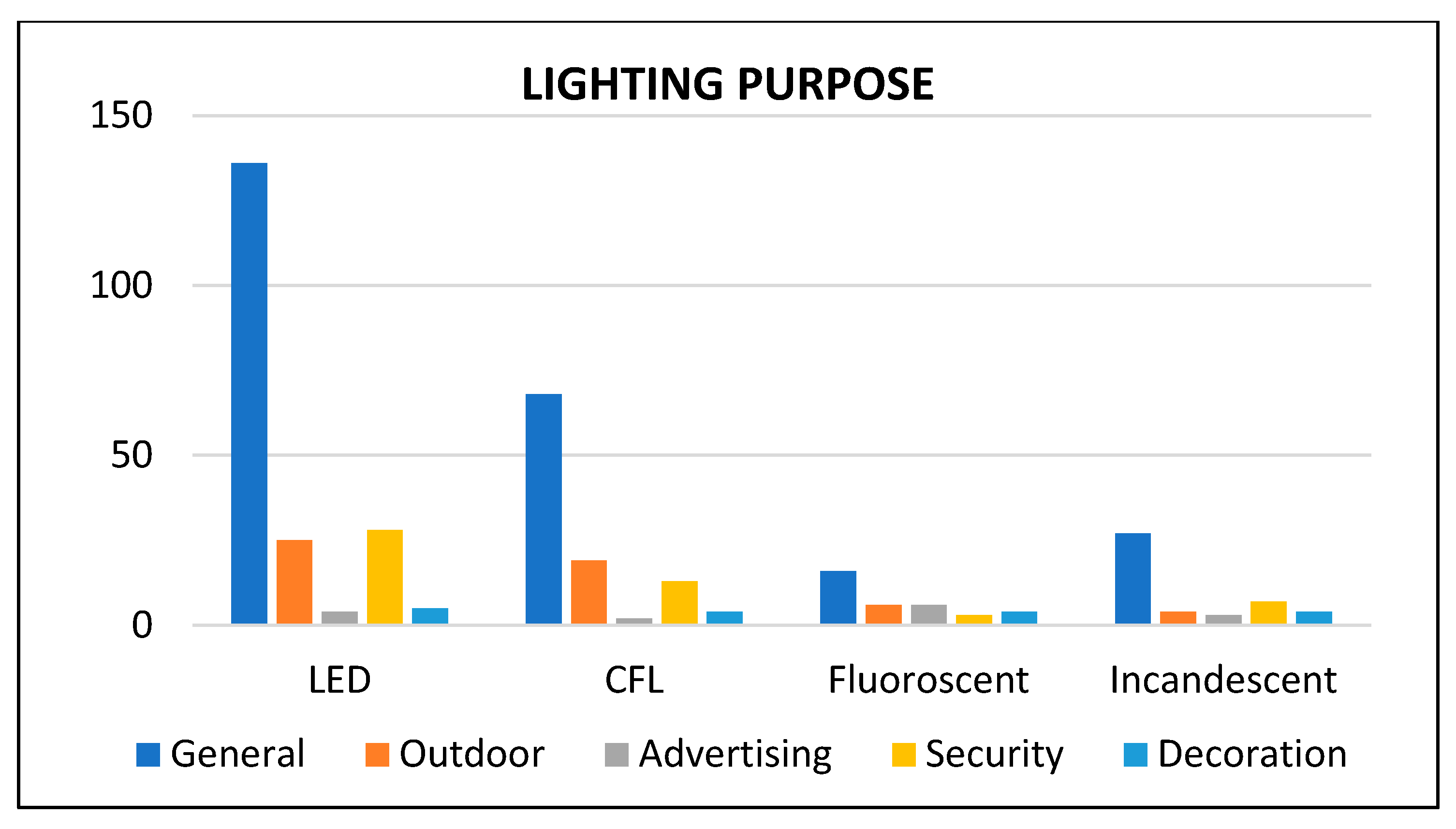
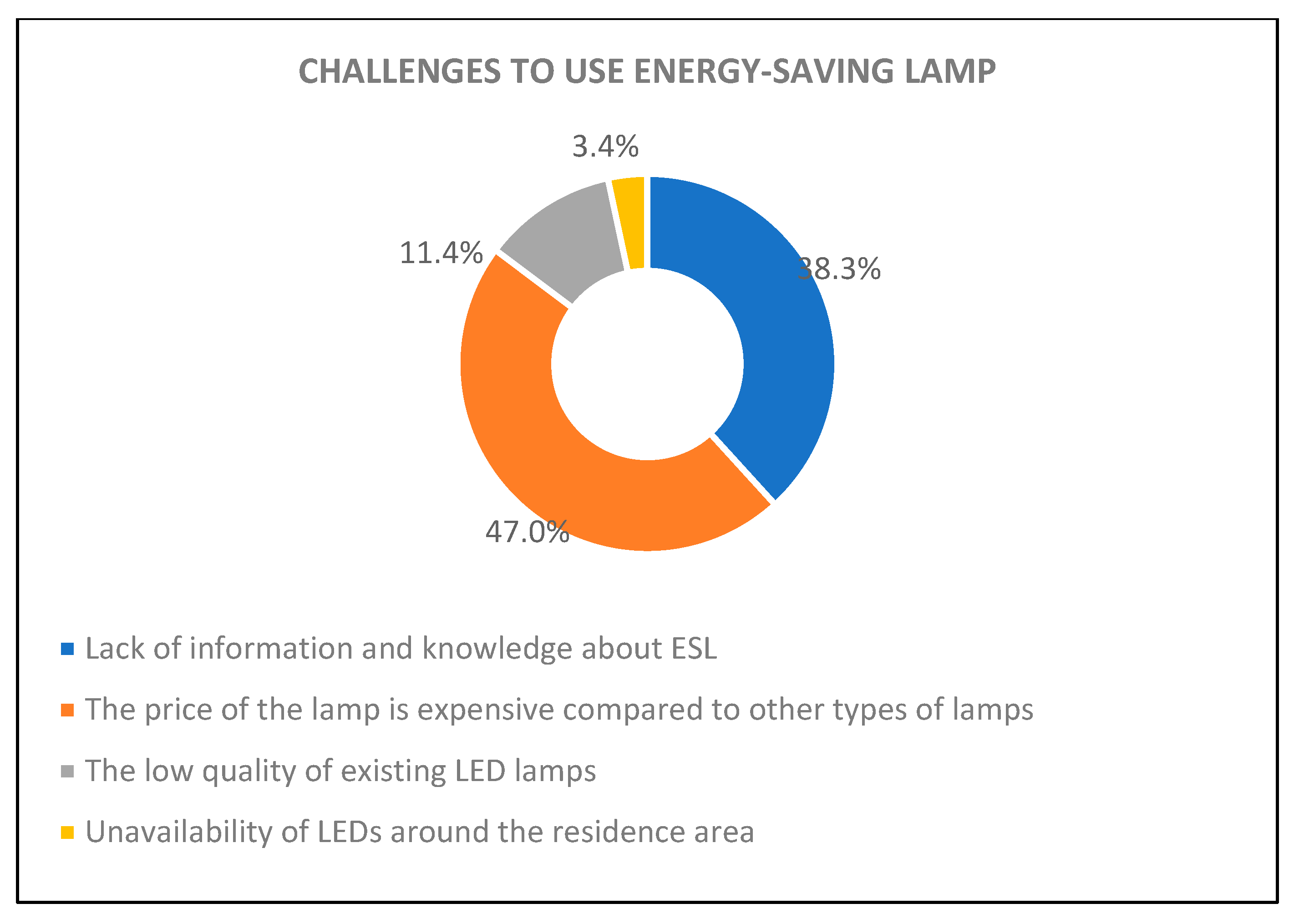
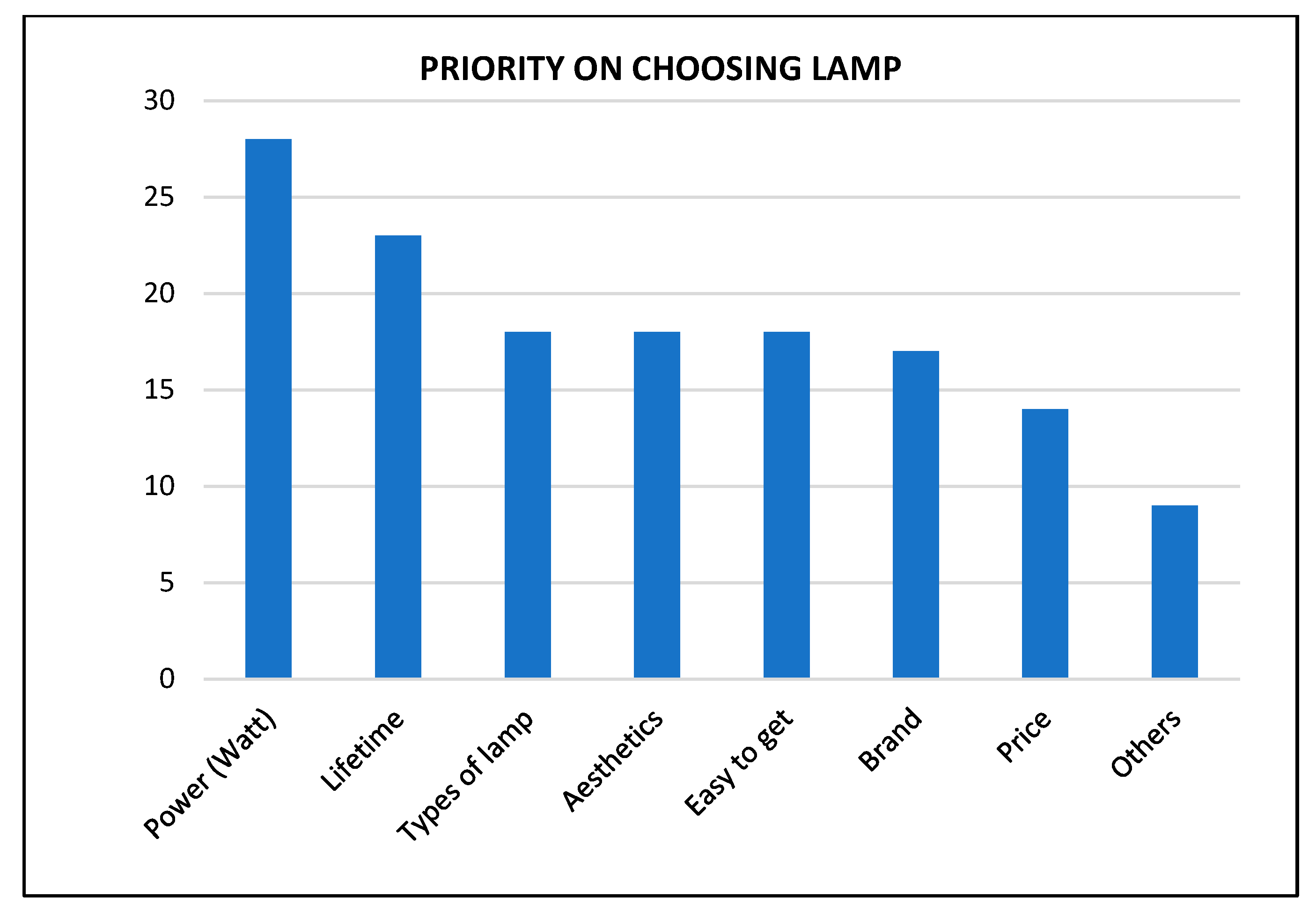
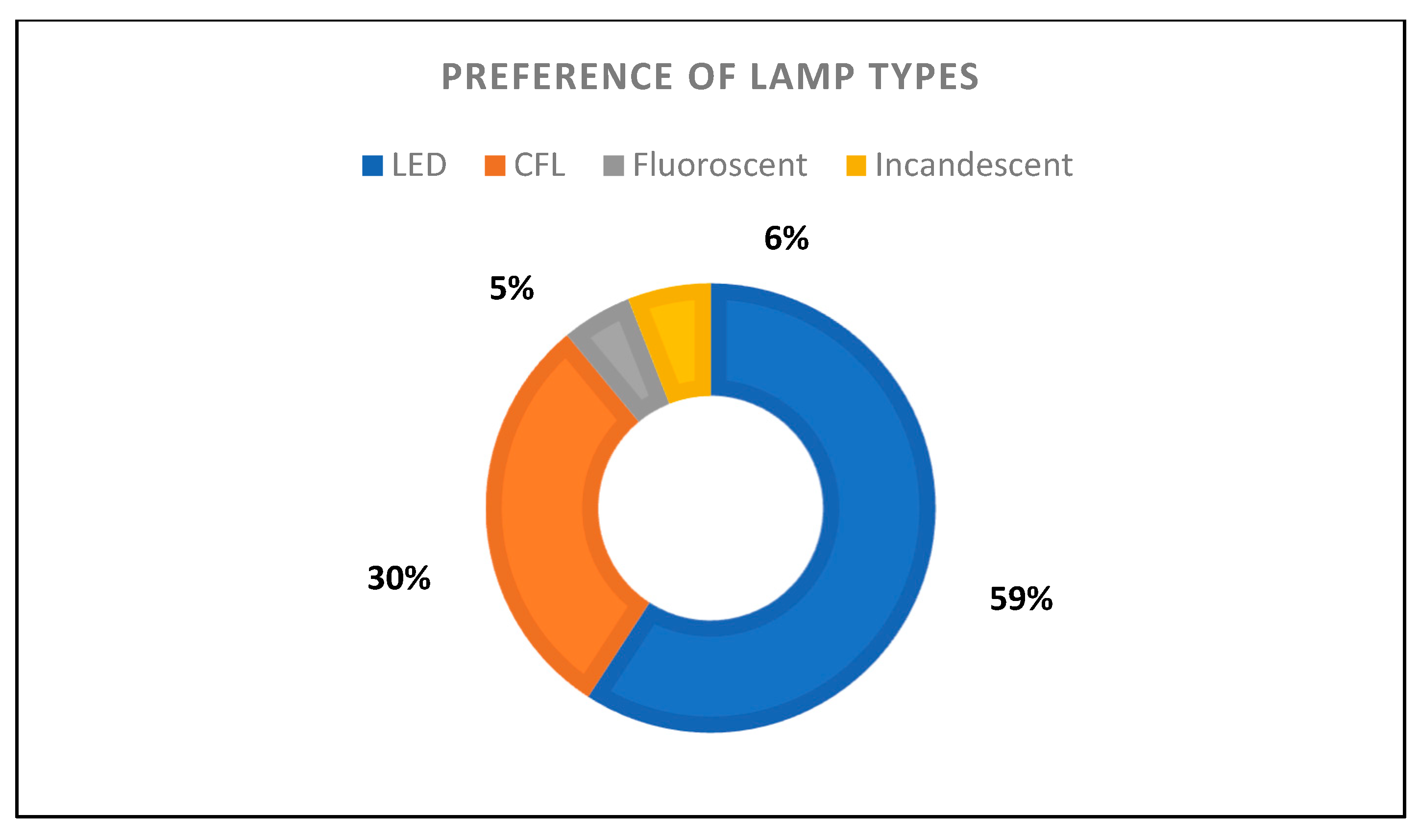
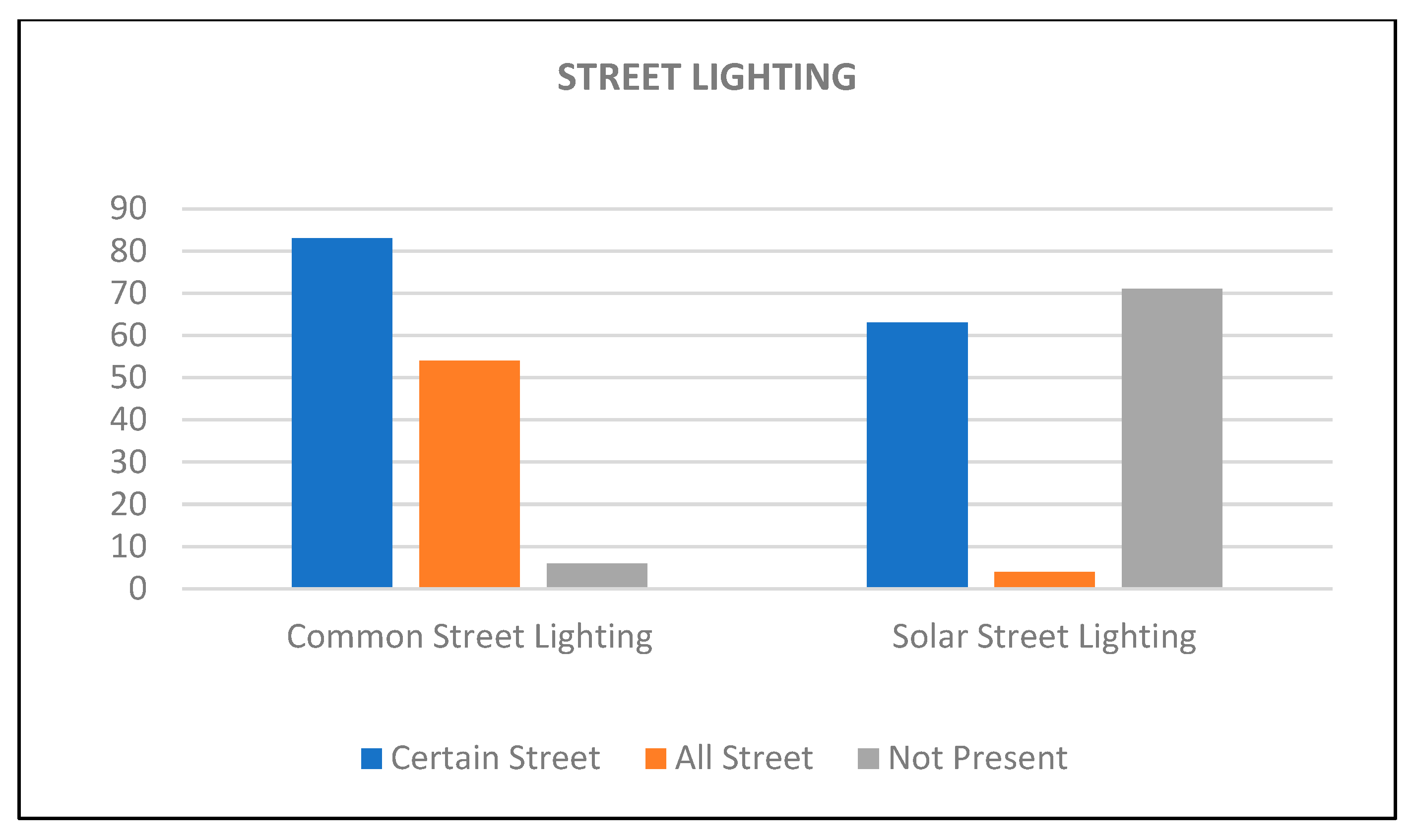
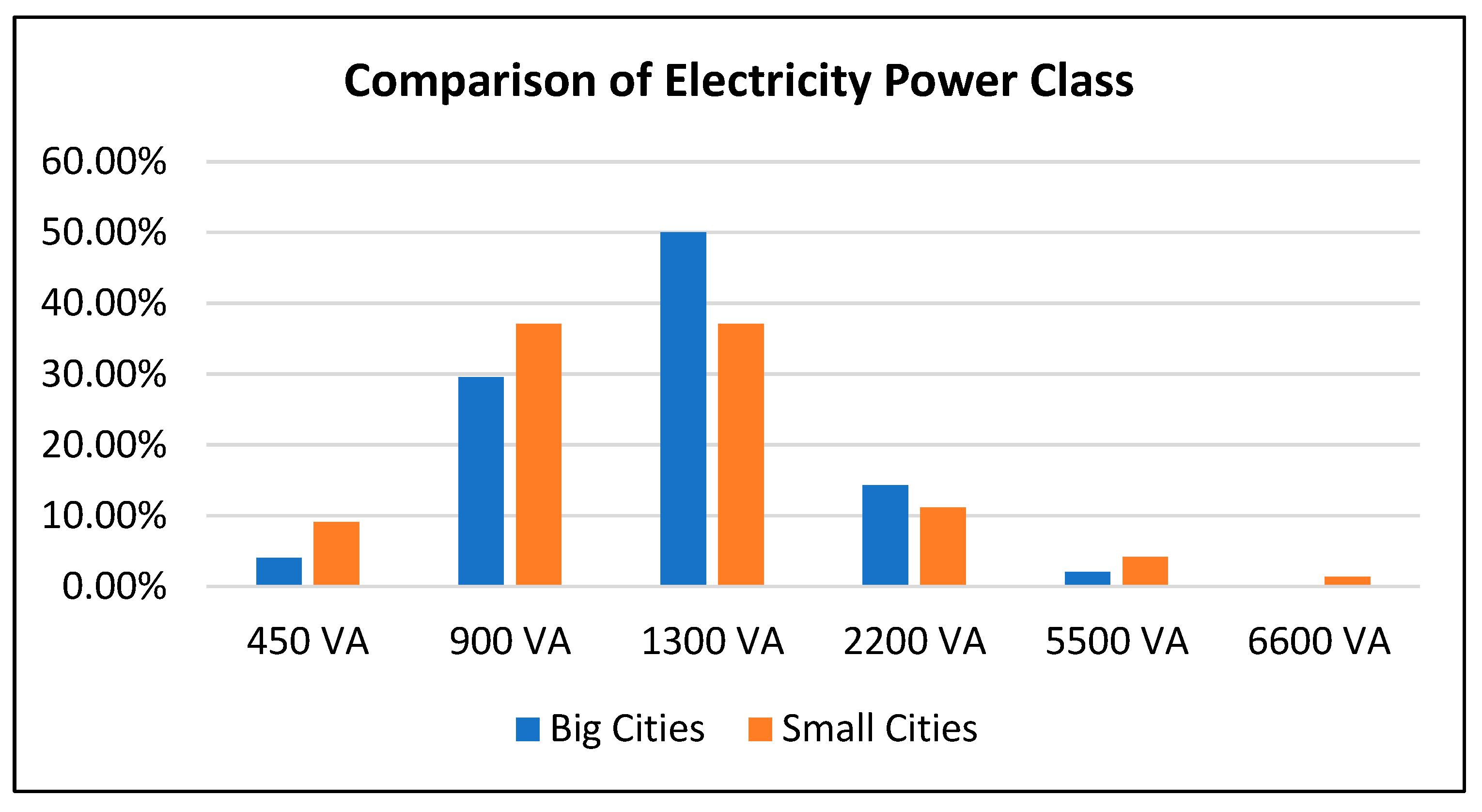

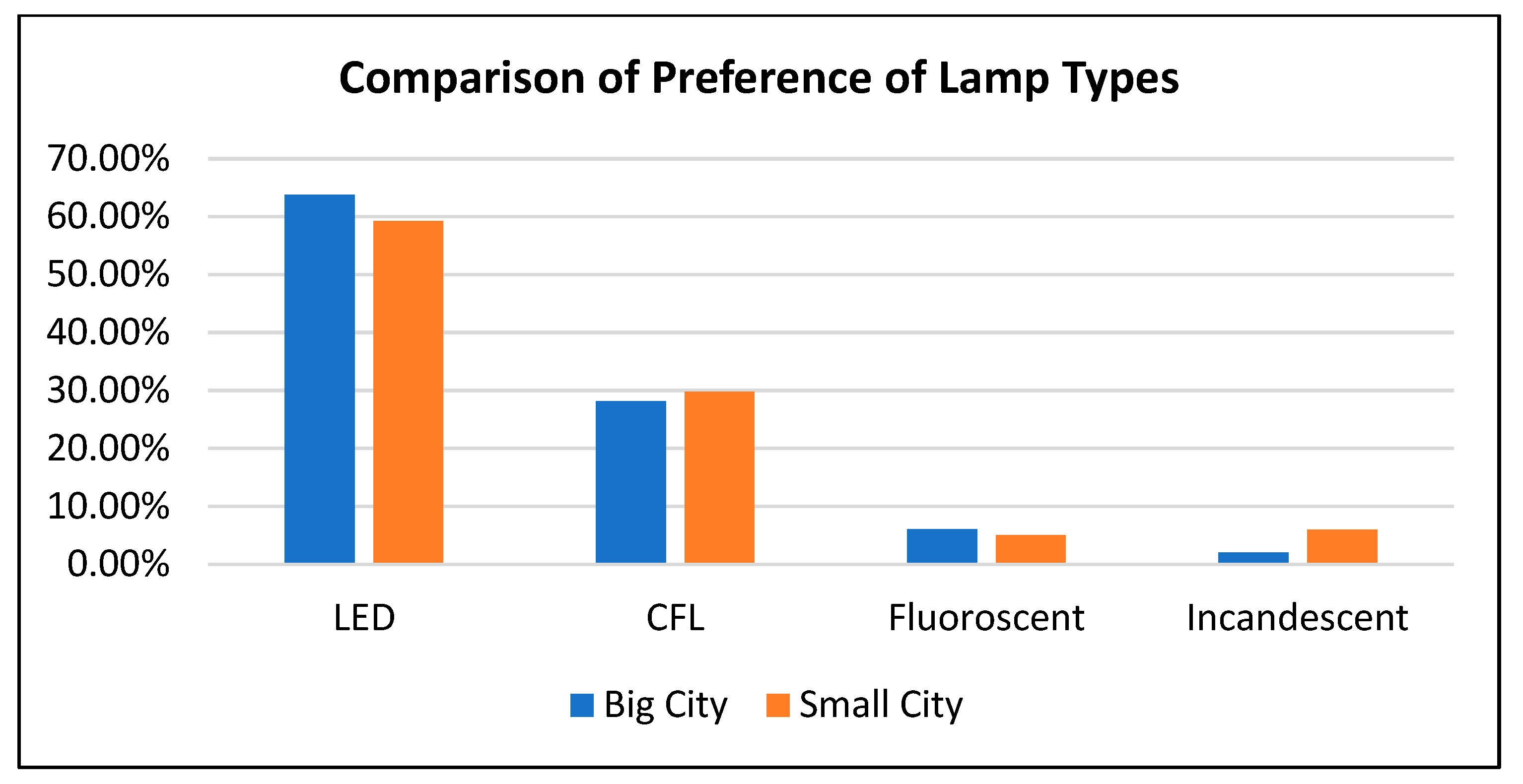
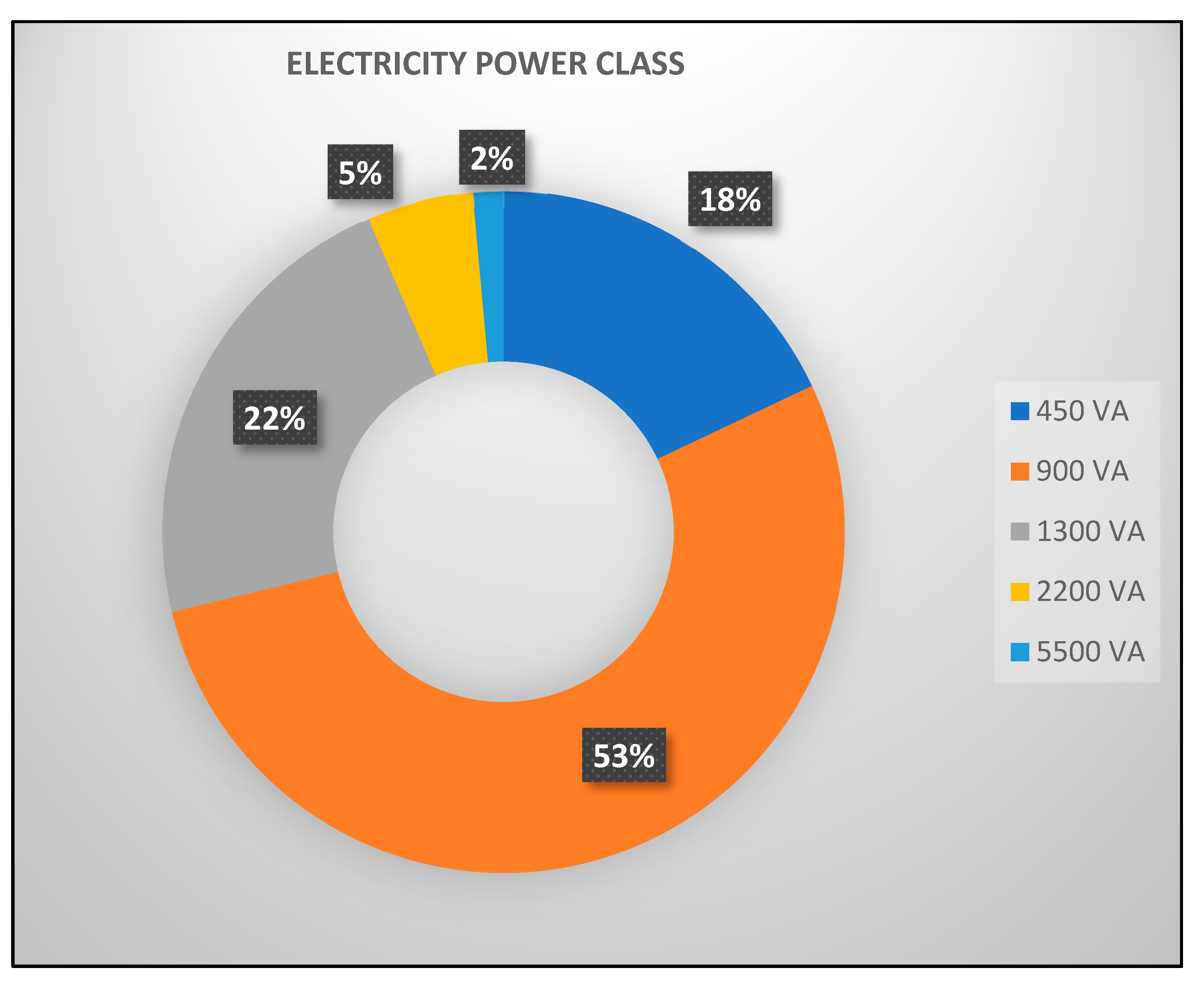
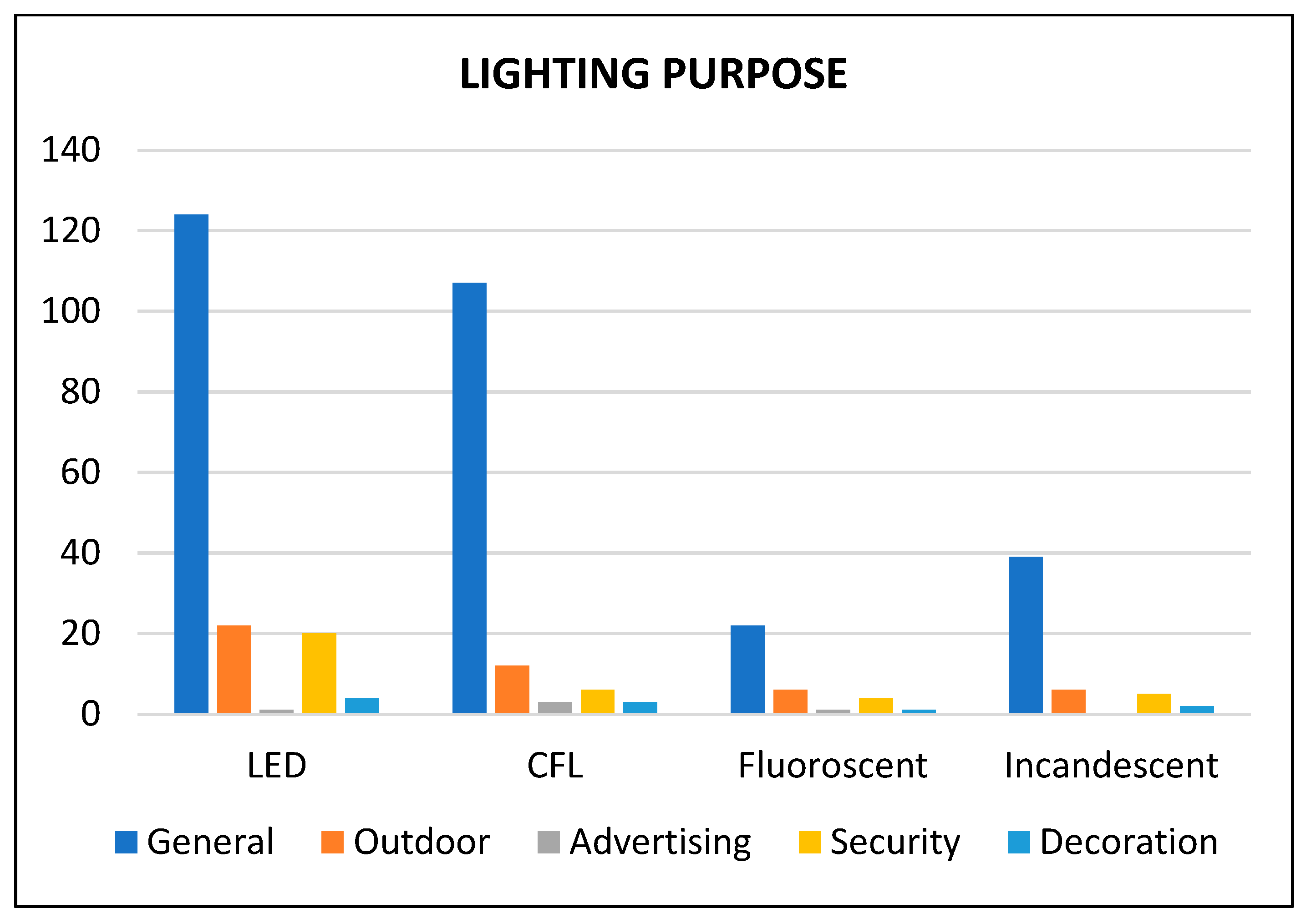
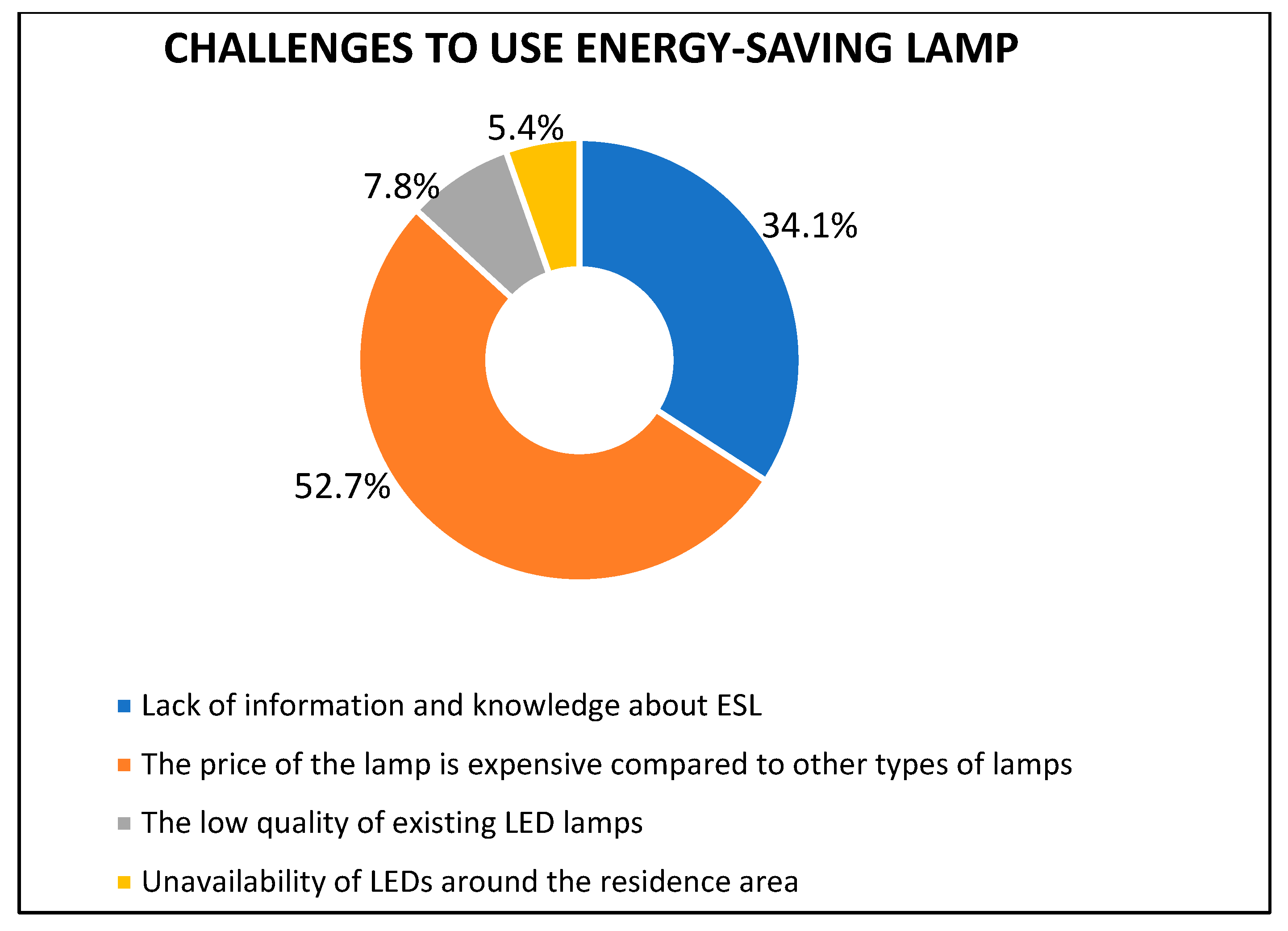
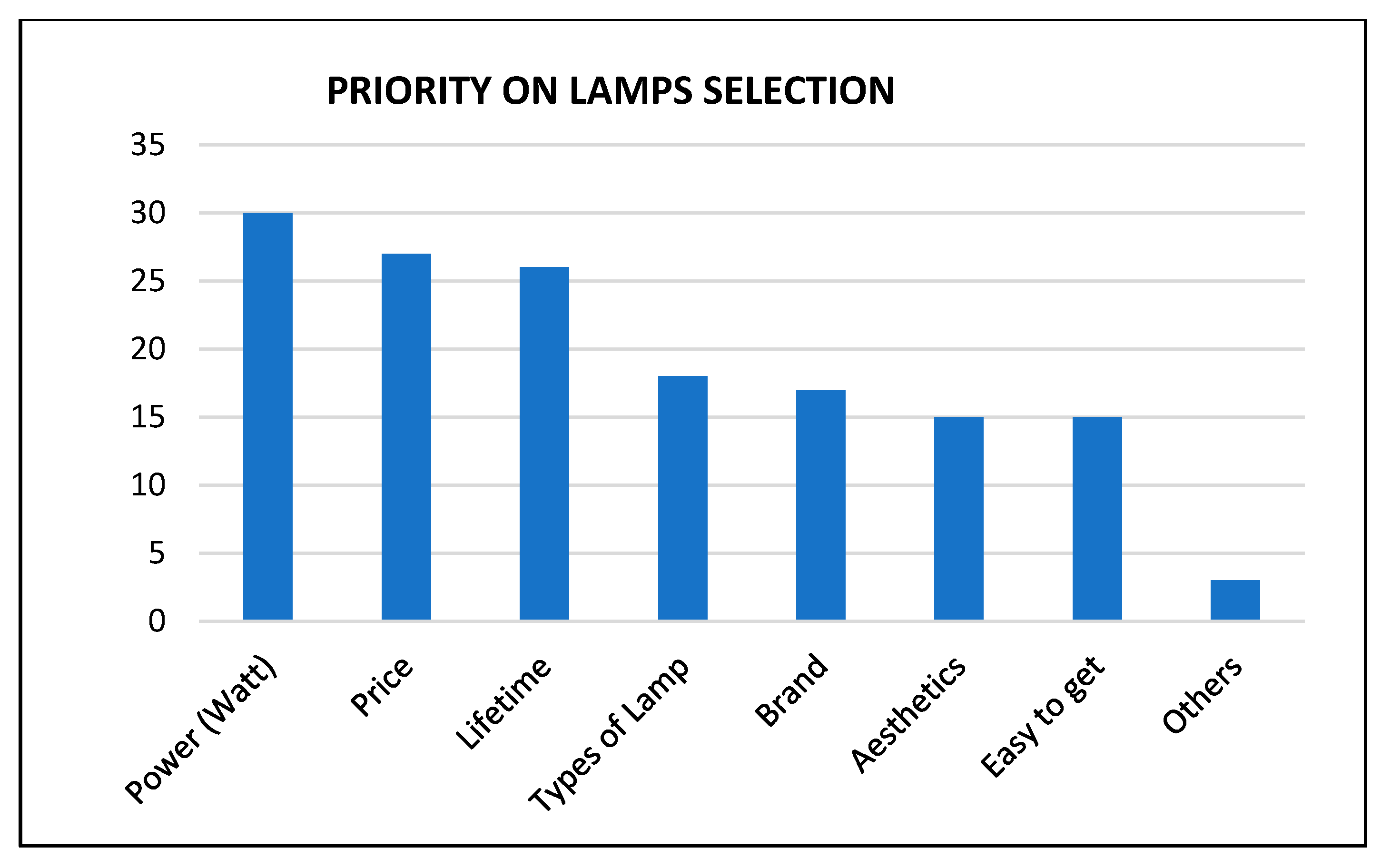

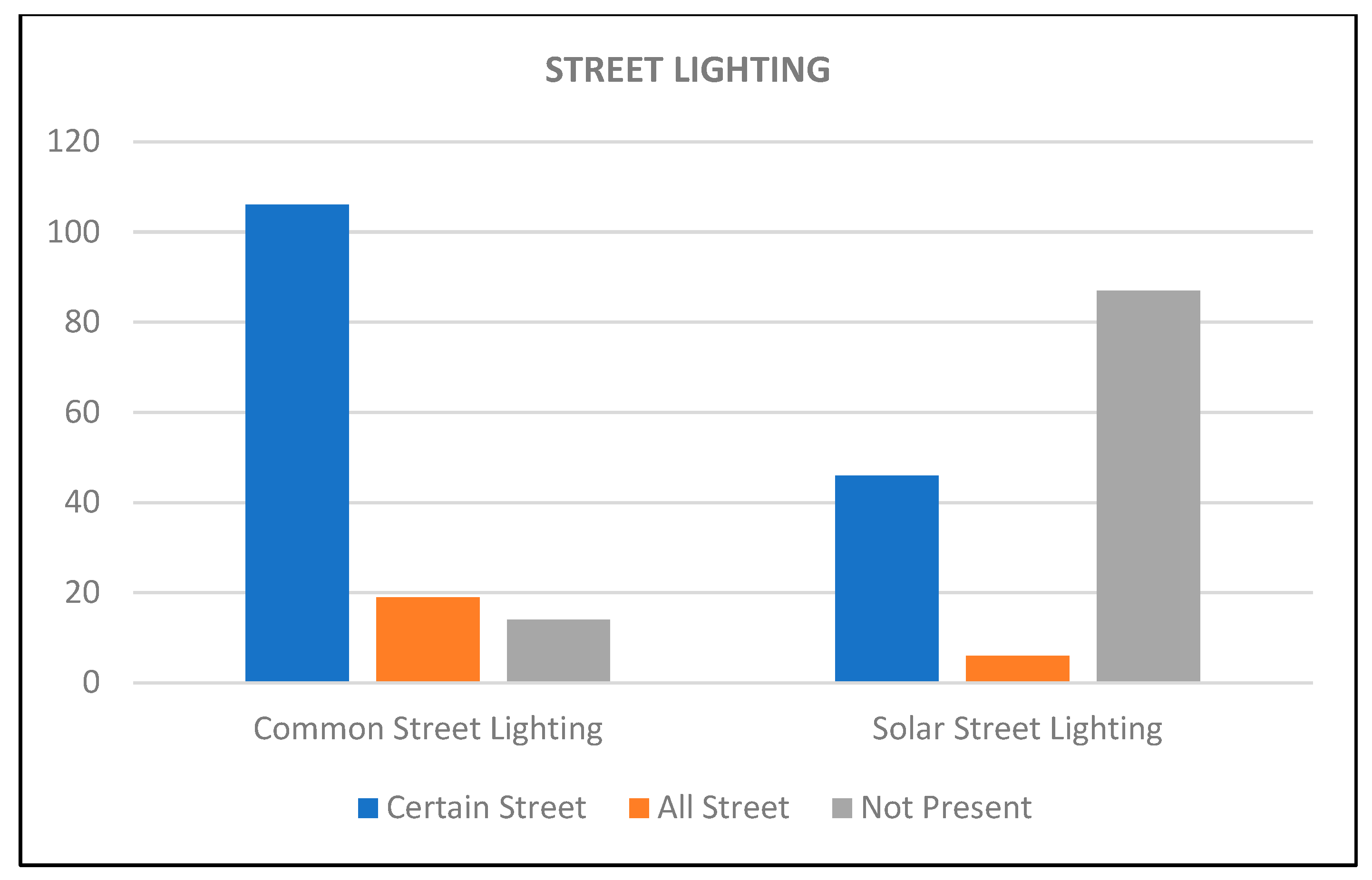

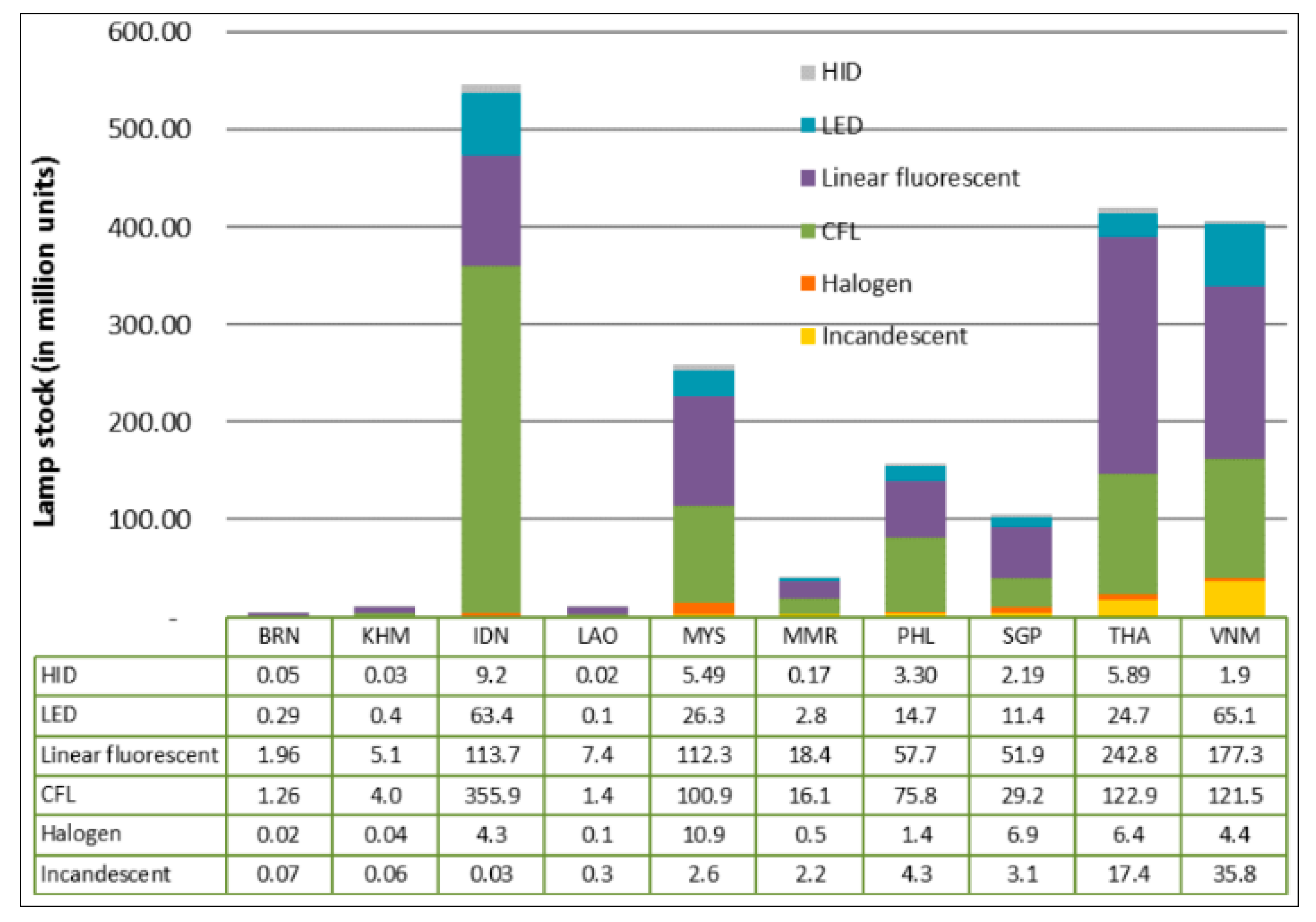
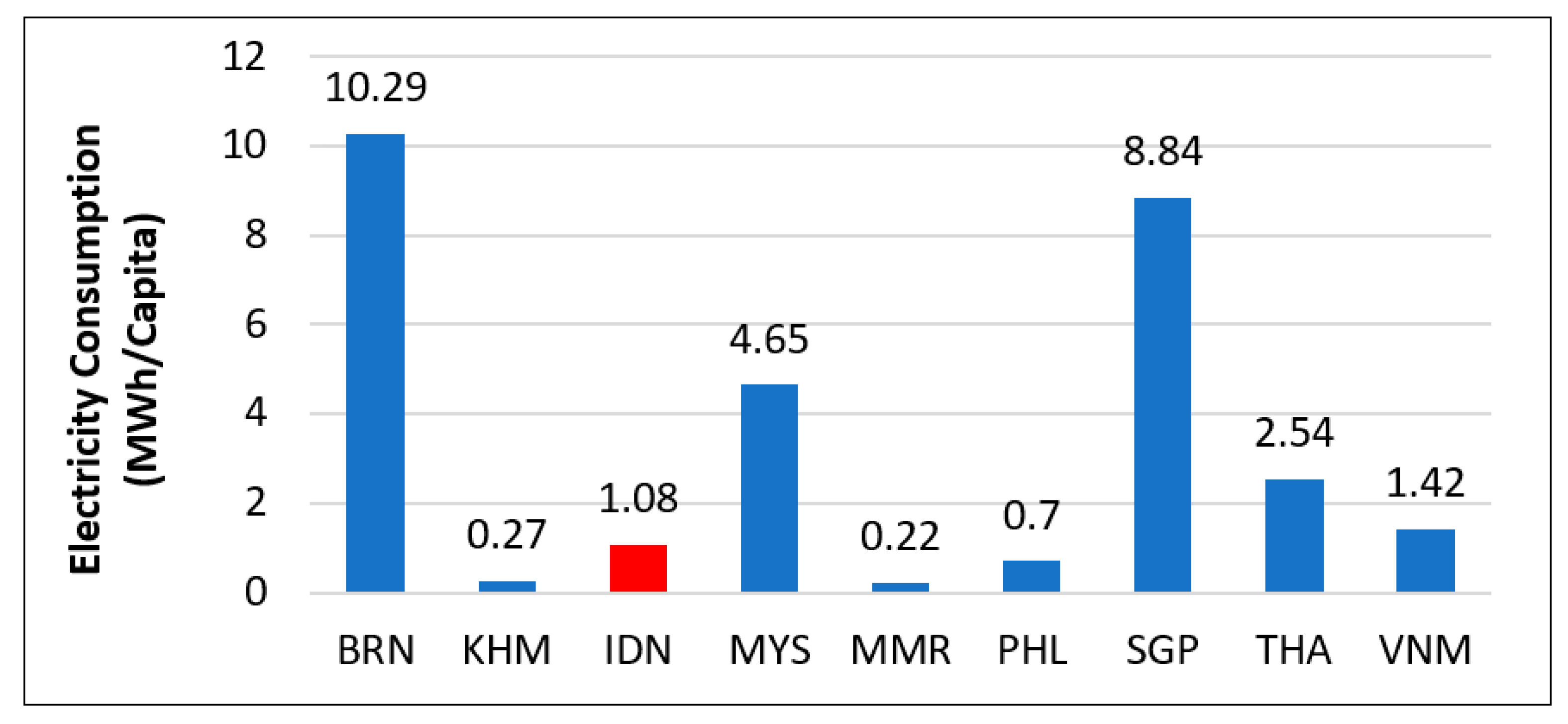
| Light Source | Efficacy (lm/W) | CRI | Lifetime (h) |
|---|---|---|---|
| Incandescent | 14.4 | 100 | 1000 |
| Compact fluorescent | 51 | 80 | 10,000 |
| High-pressure mercury | 34 | 50 | 24,000 |
| High-pressure sodium Sodium vapor lamp | 108 100 | 22 −44 | 24,000 18,000 |
| LED | 130–220 | >80 | 50,000 |
| Criteria | Minimum Requirements |
|---|---|
| Measured power | Range to between +5% and −10% |
| Maximum total harmonic | 5% |
| Lumen (after 2000 h) | ≥80% Claimed value |
| Lifetime | 6000 h |
| Power (Watt) | Efficacy (lm/W) | |||
|---|---|---|---|---|
| 1 Star | 2 Stars | 3 Stars | 4 Stars | |
| ≤8 | <34 | 34–43 | 44–53 | ≥54 |
| 8–15 | <38 | 38–47 | 48–57 | ≥58 |
| 16–25 | <42 | 42–51 | 52–61 | ≥62 |
| 26–60 | <46 | 46–55 | 56–65 | ≥66 |
| Year | Number of Households | Number of Customers | Electrification Ratio (%) |
|---|---|---|---|
| 2015 | 65,669,197 | 57,983,048 | 88.3 |
| 2016 | 66,489,409 | 60,612,009 | 91.16 |
| 2017 | 67,228,573 | 64,105,549 | 95.35 |
| 2018 | 68,082,153 | 66,921,705 | 98.3 |
| 2019 | 72,713,606 | 71,903,458 | 98.89 |
| 2020 | 75,078,681 | 74,481,755 | 99.2 |
| 2021 | 77,859,915 | 77,430,767 | 99.45 |
| 2022 | Not available yet | Not available yet | 99.63 |
| No | Regional Categories | Definition |
|---|---|---|
| 1 | Big Cities | Cities with per capita electricity consumption more than per capita national electricity consumption. |
| 2 | Small Cities | Cities with per capita electricity consumption less than per capita national electricity consumption. In Indonesia, the number of cities that are categorized as small cities is more than big cities. |
| 3 | Villages | Areas which have the natural appearance of agriculture or other natural resource and the residents have fully electrified. Usually, the residents of a village have small electricity consumption. |
| 4 | Remote Area | Areas that are still not electrified or have received electricity but with limited capacity. Usually remote areas located in hard-to-reach areas such as forest areas, mountains, etc. |
| 5 | Islands | An area consisting of many small islands. Generally, Islands are in the form of a village whose residents work as fishermen, but there are some Islands that can be categorized as small cities. |
| Comparison | Example of Big Electricity Consumption Cities (Big Cities) | Example of Small Electricity Consumption Cities (Small Cities) | ||||
|---|---|---|---|---|---|---|
| South Jakarta | Surabaya | Bandung | Garut | Pamekasan | Ponorogo | |
| Consumption (MWh/Capita) | 3.23 | 2.93 | 1.68 | 0.33 | 0.26 | 0.3 |
| GDRP (Million Rupiahs) | 272 | 190.9 | 113 | 22 | 18.9 | 23.5 |
| Area () | 154.3 | 326.8 | 167.3 | 3065 | 792.3 | 1372 |
| Total Population (people) | 2,226,800 | 2,904,751 | 2,510,103 | 2,636,637 | 850,057 | 949,320 |
| Density (people/) | 14,431 | 8888 | 15,003 | 860 | 1072 | 692 |
| Type of Room | Maximum Power (W/m2) |
|---|---|
| Residence | |
| Terrace | 3 |
| Guest Room | 7 |
| Dining Room | 7 |
| Workspace | 7 |
| Bedroom | 7 |
| Bathroom | 7 |
| Kitchen | 7 |
| Garage | 3 |
| Office | |
| Receptionist’s Room | 13 |
| Director’s Room | 13 |
| Workspace | 12 |
| Computer Room | 12 |
| Meeting Room | 12 |
| Drawing Space | 20 |
| Archive Warehouse | 6 |
| Active Archive Space | 12 |
| Emergency Stairs | 4 |
| Parking Lot | 4 |
| Parameter | Indonesia | Big City (Jakarta) | Small City (Garut) |
|---|---|---|---|
| Electrification ratio | 99.4% | 100% | 99.3% |
| MWh/Capita | 1.09 | 3.23 | 0.33 |
| ESL use (%) | 86.26% | 82.65% | 77.21% |
| Area (km2) | 1.9 million | 664.01 | 3.065 |
| Road Length (Km) | 544,474 | 6,432 | 828 |
| Number of street lighting (Real) | - | 246,347 | 8000 (6500 broken) |
| Minimum number of street lighting (SNI) | 9,074,567 | 107,200 | 13,800 |
| Comparison | Big Cities | Small Cities | Rural Areas | Island/Archipelago | Remote Area |
|---|---|---|---|---|---|
| Condition of lighting use | The lights used by residents are already dominant with LED. Street lighting completely installed on all roads with saving energy and monitoring system development. | The lights used by residents are already dominant with LED. Street lighting only available on certain roads. | In general, ESL has been widely used, even though there are some villages where the percentage of ESL use is still low. | BPS data show that the province located in archipelago area already use ESL with high percentage. | Remote areas which had got LTSHE program use 3 Watt LEDs. However, some remote areas still use traditional lights such as teplok lamp, torches, flashlights, etc. |
| Problem | Implementation of lighting limit standards is still not yet optimal. | Number of street lighting that does not meet the standard. | The absence of street lighting. | The challenge in electrification because it is blocked by intercontinental sea. | Difficulties in electrification due to limited access and infrastructure. |
| Proposed Alternative Solution | Creation of a special investigation team to do direct observation as a first step and then develop the smart home system to monitor the use of lamps and other electric equipment. | Making solar street lighting with IoT for condition monitoring. | A special budget should be provided by the government for making street lights in rural areas. | Comparative study between the use of submarine cables and small-scale diesel/solar power plant. | Improvement of infrastructure in general and acceleration of electrification program. |
| Province | Percentage of Energy Saving Lamp Installed at House | Percentage of ESL Based on Region | |||||
|---|---|---|---|---|---|---|---|
| Not Present | Less Than Half | More Than Half | All Lamps | Urban | Rural | Urban + Rural | |
| Aceh | 15.54 | 16.06 | 8.48 | 59.92 | 88.08 | 82.65 | 84.46 |
| Sumatera Utara | 11.17 | 8.11 | 7.28 | 73.44 | 89.77 | 87.66 | 88.83 |
| Sumatera Barat | 9.00 | 8.90 | 10.51 | 71.59 | 93.06 | 89.04 | 91.00 |
| Riau | 16.17 | 14.75 | 12.49 | 56.59 | 90.84 | 79.25 | 83.83 |
| Jambi | 8.12 | 10.38 | 12.01 | 69.48 | 85.10 | 95.05 | 91.88 |
| Sumatera Selatan | 10.37 | 10.84 | 12.75 | 66.03 | 88.86 | 90.05 | 89.63 |
| Bengkulu | 3.68 | 7.38 | 11.07 | 77.86 | 92.97 | 97.95 | 96.32 |
| Lampung | 7.92 | 13.65 | 13.13 | 65.30 | 90.43 | 92.80 | 92.08 |
| Kep. Bangka Belitung | 8.01 | 2.88 | 6.03 | 83.09 | 93.99 | 89.31 | 91.99 |
| Kepulauan Riau | 7.11 | 8.30 | 10.96 | 73.63 | 93.44 | 85.59 | 92.89 |
| DKI Jakarta | 7.27 | 12.93 | 19.74 | 60.06 | 92.73 | 0.00 | 92.73 |
| Jawa Barat | 13.06 | 14.13 | 18.58 | 54.23 | 87.36 | 85.53 | 86.94 |
| Jawa Tengah | 11.02 | 12.25 | 15.08 | 61.65 | 90.00 | 87.94 | 88.98 |
| DI Yogyakarta | 8.55 | 9.58 | 17.25 | 64.63 | 92.38 | 88.57 | 91.45 |
| JawaTimur | 13.29 | 16.93 | 19.30 | 50.48 | 88.16 | 85.02 | 86.71 |
| Banten | 11.29 | 9.62 | 23.22 | 55.86 | 90.61 | 83.46 | 88.71 |
| Bali | 10.69 | 5.34 | 13.90 | 70.06 | 88.80 | 90.58 | 89.31 |
| Nusa Tenggara Barat | 9.03 | 6.01 | 8.07 | 76.89 | 92.07 | 89.86 | 90.97 |
| NTT | 20.52 | 6.39 | 8.70 | 64.39 | 89.01 | 76.06 | 79.48 |
| Kalimantan Barat | 7.37 | 6.51 | 11.67 | 74.45 | 96.90 | 90.23 | 92.63 |
| Kalimantan Tengah | 7.21 | 6.05 | 6.49 | 80.25 | 97.31 | 89.55 | 92.79 |
| Kalimantan Selatan | 3.13 | 7.50 | 12.65 | 76.72 | 97.69 | 96.12 | 96.87 |
| Kalimantan Timur | 12.45 | 8.71 | 15.54 | 63.30 | 84.57 | 94.01 | 87.55 |
| Kalimantan Utara | 19.81 | 7.44 | 13.32 | 59.43 | 80.87 | 79.03 | 80.19 |
| Sulawesi Utara | 13.76 | 14.48 | 9.52 | 62.24 | 91.11 | 80.37 | 86.24 |
| Sulawesi Tengah | 18.27 | 8.88 | 10.08 | 62.77 | 91.47 | 77.28 | 81.73 |
| Sulawesi Selatan | 11.80 | 9.66 | 11.79 | 66.74 | 86.94 | 89.20 | 88.20 |
| Sulawesi Tenggara | 12.13 | 7.13 | 9.14 | 71.61 | 91.85 | 85.62 | 87.87 |
| Gorontalo | 16.07 | 12.82 | 11.77 | 59.34 | 86.39 | 81.96 | 83.93 |
| Sulawesi Barat | 15.37 | 9.41 | 12.58 | 62.64 | 95.36 | 82.01 | 84.63 |
| Maluku | 26.84 | 7.98 | 7.56 | 57.62 | 79.69 | 67.44 | 73.16 |
| Maluku Utara | 19.80 | 10.24 | 11.51 | 58.45 | 74.02 | 82.76 | 80.20 |
| Papua Barat | 15.30 | 9.19 | 6.44 | 69.07 | 87.74 | 82.29 | 84.70 |
| Papua | 33.54 | 5.94 | 5.36 | 55.16 | 79.57 | 59.54 | 66.46 |
| Indonesia | 11.94 | 12.04 | 15.17 | 60.86 | 89.34 | 86.36 | 88.06 |
Disclaimer/Publisher’s Note: The statements, opinions and data contained in all publications are solely those of the individual author(s) and contributor(s) and not of MDPI and/or the editor(s). MDPI and/or the editor(s) disclaim responsibility for any injury to people or property resulting from any ideas, methods, instructions or products referred to in the content. |
© 2023 by the authors. Licensee MDPI, Basel, Switzerland. This article is an open access article distributed under the terms and conditions of the Creative Commons Attribution (CC BY) license (https://creativecommons.org/licenses/by/4.0/).
Share and Cite
Khayam, U.; Zaeni, A.; Banjar-Nahor, K.M.; Hamdani, D.; Sinisuka, N.I.; Dupuis, P.; Zissis, G.; Canale, L. Status of Lighting Technology Application in Indonesia. Sustainability 2023, 15, 6283. https://doi.org/10.3390/su15076283
Khayam U, Zaeni A, Banjar-Nahor KM, Hamdani D, Sinisuka NI, Dupuis P, Zissis G, Canale L. Status of Lighting Technology Application in Indonesia. Sustainability. 2023; 15(7):6283. https://doi.org/10.3390/su15076283
Chicago/Turabian StyleKhayam, Umar, Arpan Zaeni, Kevin Marojahan Banjar-Nahor, Deny Hamdani, Ngapuli Irmea Sinisuka, Pascal Dupuis, Georges Zissis, and Laurent Canale. 2023. "Status of Lighting Technology Application in Indonesia" Sustainability 15, no. 7: 6283. https://doi.org/10.3390/su15076283
APA StyleKhayam, U., Zaeni, A., Banjar-Nahor, K. M., Hamdani, D., Sinisuka, N. I., Dupuis, P., Zissis, G., & Canale, L. (2023). Status of Lighting Technology Application in Indonesia. Sustainability, 15(7), 6283. https://doi.org/10.3390/su15076283








